currency peg
description: type of exchange rate regime where a currency's value is fixed against the value of another single currency
66 results
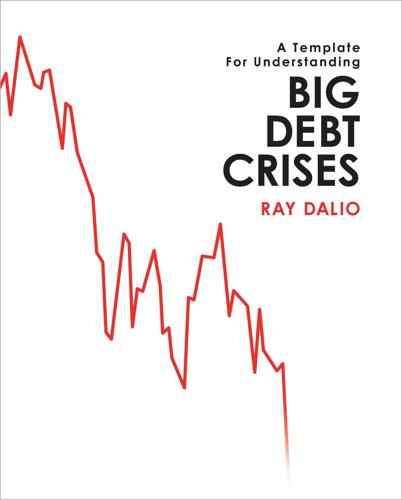
Big Debt Crises
by
Ray Dalio
Published 9 Sep 2018
The money printing occurs in two classic waves—central banks first provide liquidity to stressed institutions, and then they conduct large-scale asset purchases to broadly stimulate the economy. Below we show the average real exchange rate versus trade partners, which reflects the strength/weakness of a currency relative to the country’s trade partners. Typically, governments with gold-, commodity-, or foreign-currency-pegged money systems are forced to have tighter monetary policies to protect the value of their currency than governments with fiat monetary systems. But eventually the debt contractions become so painful that they relent, break the link, and print (i.e., either they abandon these systems or change the amount/pricing of the commodity that they will exchange for a unit of money).
…
To further build faith in the new currency… …The central bank built up large reserves of foreign currency assets. They were able to do this by borrowing foreign exchange from the Allies and encouraging German citizens who had fled the currency during the hyperinflation to repatriate their savings. Earlier one-off measures (e.g., the short-lived currency peg, capital controls) hadn’t been enough—Germany needed a comprehensive and aggressive policy shift that abolished the currency, accepted hard backing, and placed extreme limits on monetization, credit creation, and government spending. It helped that years of economic crisis had made the public eager to find a currency that they could actually use.
…
capital inflows/outflows: The movement of money and credit across borders to buy capital/investment assets (like bonds, currency, equities, a factory, etc.). Foreigners buying/selling a country’s assets are ‘inflows’ and domestic players buying/selling foreign assets are ‘outflows.’ core inflation: Inflation that excludes the prices of especially volatile goods, such as commodities. currency peg: An exchange rate policy in which a country tries to keep its currency at a fixed value to another currency, a mix of currencies, or an asset such as gold. current account balance: Exports minus imports plus net income receipts. Think of it as essentially being net income (income minus expenses).
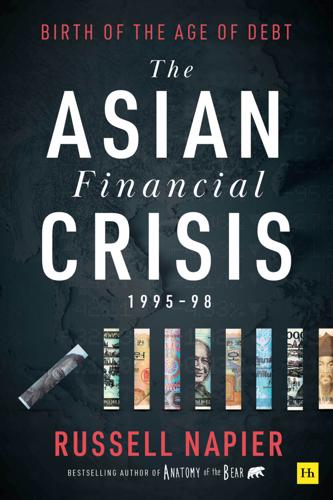
The Asian Financial Crisis 1995–98: Birth of the Age of Debt
by
Russell Napier
Published 19 Jul 2021
The strength of the blade was increased by this metallurgical process. The strength of a currency peg is based upon a psychological process. Norman Lamont can vouch for the fact that there is little which can add stability to a currency peg when the psychological strength dissolves. The strength of a currency peg is tempered in a psychological ‘fire’. The collapse of the Mexican peso created such a ‘fire’ and sent it raging through the world’s currency markets. Having passed through the flames, the surviving currency pegs have been tempered and thus strengthened. The rupiah/US dollar crawling peg, one of the world’s weakest pegs, has been one of the biggest beneficiaries of the tempering process.
…
The tumble in the market up to that date had been caused by a growing belief that the Thai government was prepared to follow the deflationary option. So is the stock market’s reaction to the devaluation an overreaction? Yes. The currency movement augurs a more accommodative monetary policy. With the currency peg straitjacket removed, interest rates can be adjusted in line with domestic economic conditions. However, the currency adjustment produced an 1100bp rise in overnight baht interest rates! Such an initial reaction is not surprising as many domestic actors have been genuinely surprised by the government’s announcement.
…
The pledge to provide subsidised lending to corporate Thailand (assuming this is baht denominated) is an inherent recognition that the authorities will resort to the printing presses. Given the dynamics above, it seems unlikely that the next few months will see a dramatic decline in interest rates (from Monday’s levels) and the defeat of the forces of deflation. An orderly retreat from the currency peg means a gradual decline in interest rates and it will be some time before bankers’ spreads have been rebuilt to such a level that results in the recapitalisation of the financial system. Within this adjustment period, credit growth will continue to slow and financial distress will accelerate. Listed companies will go bankrupt.

Currency Wars: The Making of the Next Gobal Crisis
by
James Rickards
Published 10 Nov 2011
With memories of Tiananmen fresh in their minds and the historical memory of over a century of chaos, the leadership knew the survival of the Communist Party and the continuation of political stability depended on job creation; everything else in Chinese policy would be subordinate to that goal. The surest way to rapid, massive job creation was to become an export powerhouse. The currency peg was the means to this end. For the Communist Party of China, the dollar-yuan peg was an economic bulwark against another Tiananmen Square. By 1992, reactionary elements in China opposed to reform again began to push for a dismantling of Deng’s special economic zones and other programs. In response, a visibly ailing and officially retired Deng Xiaoping made his famous New Year’s Southern Tour, a personal visit to major industrial cities, including Shanghai, which generated support for continued economic development and which politically disarmed the reactionaries.
…
For the IMF, it was more like a reprieve. As late as 2006 many international monetary experts seriously questioned the purpose and continued existence of the IMF. In the 1950s and 1960s, it had provided bridge loans to countries suffering temporary balance of payments difficulties to allow them to maintain their currency peg to the dollar. In the 1980s and 1990s it had assisted developing economies suffering foreign exchange crises by providing finance conditioned upon austerity measures designed to protect foreign bankers and bondholders. Yet with the elimination of gold, the rise of floating exchange rates and the piling up of huge surpluses by developing countries, the IMF entered the twenty-first century with no discernable mission.
…
From June 2010 through January 2011, yuan revaluation had moved at about a 4 percent annualized rate and Chinese inflation was moving at a 5 percent annualized rate so the total increase in the Chinese cost structure by adding revaluation and inflation was 9 percent. Projected over several years, this meant that the dollar would decline over 20 percent relative to the yuan in terms of export prices. This was exactly what Senator Chuck Schumer and other critics in the United States had been calling for. China now had no good options. If it maintained the currency peg, the Fed would keep printing and inflation in China would get out of control. If China revalued, it might keep a lid on inflation, but its cost structure would go up when measured in other currencies. The Fed and the United States would win either way. While revaluation and inflation might be economic equivalents when it came to increasing costs, there was one important difference.

The Euro and the Battle of Ideas
by
Markus K. Brunnermeier
,
Harold James
and
Jean-Pierre Landau
Published 3 Aug 2016
External Commitments: Currency Pegs, Unions, and the Gold Standard Historically, government often looked for other external commitment devices that make it difficult to inflate away the public debt. The basic idea underlying the use of external commitment devices is rather simple. A country pegs the value of its own currency to some anchor—either foreign currency or a commodity (gold)—over whose value it has little control. If the value of the anchor does not change too quickly, and if the peg is credible, then the domestic currency will also remain stable. From Currency Pegs to Currency Unions Many countries around the world tie or have tied the real value of their currency to a foreign currency (or a basket of currencies).
…
Printed in the United States of America 13579108642 Contents 1 Introduction 1 PART I: POWER SHIFTS AND GERMAN-FRENCH DIFFERENCES 2 Power Shifts 17 Lethargy of European Institutions 18 The First Power Shift: From Brussels to National Capitals 20 The Second Power Shift: To Berlin-Paris and Ultimately to Berlin 27 After the Power Shift 33 3 Historical Roots of German-French Differences 40 Cultural Differences 41 Federalism versus Centralism 43 Mittelstand versus National Champions 48 Collaborative versus Confrontational Labor Unions 51 Historical Inflation Experiences 54 4 German-French Differences in Economic Philosophies 56 Fluid Traditions: Switch to Opposites 56 German Economic Tradition 59 French Economic Tradition 67 International Economics 74 PART II: MONETARY AND FISCAL STABILITY: THE GHOST OF MAASTRICHT 5 Rules, Flexibility, Credibility, and Commitment 85 Time-Inconsistency: Ex Ante versus Ex Post 86 External Commitments: Currency Pegs, Unions, and the Gold Standard 89 Internal Commitments: Reputation and Institutional Design 91 Managing Current versus Avoiding Future Crisis 94 6 Liability versus Solidarity: No-Bailout Clause and Fiscal Union 97 The No-Bailout Clause 98 Fiscal Unions 100 Eurobonds 111 Policy Recommendations 115 7 Solvency versus Liquidity 116 Buildup of Imbalances and the Naked Swimmer 117 Solvency 118 Liquidity 119 Crossing the Rubicon via Default 125 Sovereign-Debt Restructuring and Insolvency Mechanism 126 Fiscal Push: Increasing Scale and Scope of EFSF and ESM 127 Monetary Push 131 Policy Recommendations 133 8 Austerity versus Stimulus 135 The Fiscal Multiplier Debate 137 The Output Gap versus Unsustainable Booms Debate 143 Politics Connects Structural Reforms and Austerity 145 The European Policy Debate on Austerity versus Stimulus 148 Lessons and Policy Recommendations 153 PART III: FINANCIAL STABILITY: MAASTRICHT’S STEPCHILD 9 The Role of the Financial Sector 157 Traditional Banking 159 Modern Banking and Capital Markets 162 Cross-Border Capital Flows and the Interbank Market 166 10 Financial Crises: Mechanisms and Management 173 Financial Crisis Mechanisms 175 Crisis Management: Monetary Policy 185 Crisis Management: Fiscal Policy and Regulatory Measures 194 Ex Ante Policy: Preventing a Crisis 206 11 Banking Union, European Safe Bonds, and Exit Risk 210 Banking in a Currency Union 211 Safe Assets: Flight-to-Safety Cross-Border Capital Flows 222 Redenomination and Exit Risks 226 Policy Recommendations 233 PART IV: OTHERS’ PERSPECTIVES 12 Italy 237 Battling Economic Philosophies within Italy 237 Mezzogiorno: Convergence or Divergence within a Transfer Union 239 Italy’s Economic Challenges 242 Politics and Decline 245 13 Anglo-American Economics and Global Perspectives 249 Diverging Traditions 251 The United States: The Politics of Looking for Recovery 261 The United Kingdom: Brexit and the Politics of Thinking Outside Europe 267 China and Russia 279 Conclusion 286 14 The International Monetary Fund (IMF) 287 The IMF’s Philosophy and Crisis Management 289 The IMF’s Initial Involvement in the Euro Crisis 295 The IMF and the Troika 300 A Change in the IMF’s Leadership 304 Loss of Credibility: Muddling Through, Delayed Greek PSI 306 15 European Central Bank (ECB) 313 The ECB before the Crisis: Institutional Design and Philosophy 315 The ECB’s Early Successes and Defeats 325 The ECB and Conditionality 331 Lending and Asset Purchase Programs 343 Single Supervisory Mechanism (SSM) for European Banks 368 Taking Stock: Where Does the ECB Stand?
…
In particular, this chapter tries to answer the following questions: •What advantages do rules have in avoiding and managing crises, and what are their costs? •How do rules help to overcome time-inconsistency problems—that countries find it advantageous to first create the impression that they would do one thing but ex post do another? •Historically, how were the gold standard, currency pegs, and other external commitment devices used to find the right balance between containing time-inconsistency problems and maintaining flexibility? •How can reputation replace external commitment devices? •How can delegation to an independent central bank help to overcome time-inconsistency problems?

The Euro: How a Common Currency Threatens the Future of Europe
by
Joseph E. Stiglitz
and
Alex Hyde-White
Published 24 Oct 2016
There is a simple answer to this apparent puzzle: a fatal decision, in 1992, to adopt a single currency, without providing for the institutions that would make it work. Good currency arrangements cannot ensure prosperity, but flawed currency arrangements can lead to recessions and depressions. And among the kinds of currency arrangements that have long been associated with recessions and depressions are currency pegs, where the value of one country’s currency is fixed relative to another or relative to a commodity. America’s depression at the end of the 19th century was linked to the gold standard, where every country pegged its currency’s value to gold and, therefore, implicitly to each other’s currencies: with no new large discoveries of gold, its scarcity was leading to the fall of prices of ordinary goods in terms of gold—to what we call today deflation.3 In effect, money was becoming more valuable.
…
The economic costs of these crises are enormous; they are felt not only in the high unemployment and lost output today but in lower growth for years—in some cases, decades. Such crises have happened repeatedly, with the euro crisis being only the most recent and worst example. In chapter 2, for instance, I described the Argentine crisis in 2001–2002. It is easy to understand why such crises are so common with currency pegs. If somehow the exchange rate becomes too high, there will be a trade deficit, with imports exceeding exports. This deficit has to be financed somehow, offset by what are called capital inflows. These can take the form of debt or direct investments. The problems posed by debt are most obvious: eventually the debt reaches so high a level that creditors’ sentiments begin to change.
…
For the sake of Europe, for the sake of the world, let us hope that Europe sets out to do so. NOTES Preface 1 More precisely, around 45 percent at the start of 2016, according to Eurostat. 2 The address was published as Robert E. Lucas Jr., “Macroeconomic Priorities,” American Economic Review 93, no. 1 (2003): 1–14; the quote appears on p. 1. 3 With every country’s currency pegged to gold, the value of each currency relative to the other was also fixed. 4 Bryan uttered this phrase in his July 9, 1896, speech at the Democratic National Convention in Chicago. 5 See Barry Eichengreen, Golden Fetters: The Gold Standard and the Great Depression, 1919–1939 (New York: Oxford University Press, 1992). 6 The equivalent value for US and China GDPs are $17.9 trillion and $11.0 trillion, respectively.

Why Aren't They Shouting?: A Banker’s Tale of Change, Computers and Perpetual Crisis
by
Kevin Rodgers
Published 13 Jul 2016
In this, they were simply following on from what they had been doing in Asia for a few years; the long-established Bankers Trust Asian Emerging Markets team were now our colleagues and the model for our new unit. Why did clients invest in these markets? The answer was to get much higher returns than in developed markets for – it was thought – very little extra risk. The reason they thought this was because of currency pegging. A major risk when you invest in any foreign market, but most particularly in emerging markets, is that while your investment can do well in foreign currency terms, if that currency depreciates against your own you can end up losing. You can hedge with FX products but they are costly if the market perceives a large risk and so much of the benefit of higher returns is wiped out.
…
The ‘one-day p99’ VaR for the fund in late summer 1997 was around $100 million – a huge number, but peanuts compared to their multibillion-dollar capital.12 It would take a ‘ten sigma event’ (translation – something occurring randomly once in several lifetimes of the universe) for the fund to be wiped out in a year.13 Assuming, that is, that the future behaved itself and resembled the past. A crisis in Asia was the first sign that this assumption might not hold. A Bit of a Drawdown Asia’s ‘Tiger’ economies were touted as the success story of the 1990s. Currency pegs, introduced over the previous decade, had been designed to provide reduced risk: reduced risk for foreign lenders who could rest easy that their high returns in local currency would not be devalued away, and reduced risk for local borrowers who could access the lower interest rates available in US dollars without the prospect of a stronger dollar making their repayments unaffordable in their own currency.
…
Derivatives, the offspring of growing computer power, played an important role in this explosion of debt, which, unlike the 1980s, was no longer dominated by bank lending but rather by foreign direct investment (FDI), in large part to private firms.16 Money was lent, often using complex variants of the total return swap, in ways that were not transparent to the rest of the market. VaR models added to the problem. Because of Asian currencies’ pegs to the US dollar, which allowed only small price variations around a central rate, their volatilities, calculated by looking back over historical data series, were very low. For example, in the three years prior to June 1997 when the crisis started, the average volatility of the Thai baht to US dollar exchange rate had been around 3.7 per cent.
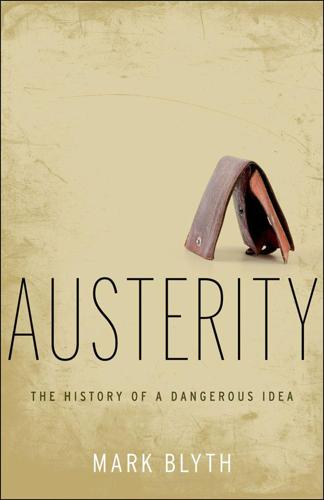
Austerity: The History of a Dangerous Idea
by
Mark Blyth
Published 24 Apr 2013
That gave the German economy the advantage in producing less-than-great stuff too, thereby undercutting competitors in products lower down, as well as higher up the value-added chain.47 Add to this contemporary German wages, which have seen real declines over the 2000s, and you have an economy that is extremely hard to keep up with. On the other side of this one-way bet were the financial markets. They looked at less dynamic economies, such as the United Kingdom and Italy, that were tying themselves to the deutsche mark and saw a way to make money. The only way to maintain a currency peg is to either defend it with foreign exchange reserves or deflate your wages and prices to accommodate it. To defend a peg you need lots of foreign currency so that when your currency loses value (as it will if you are trying to keep up with the Germans), you can sell your foreign currency reserves and buy back your own currency to maintain the desired rate.
…
Soros could do this because he knew that there was no way the United Kingdom or Italy could be as competitive as Germany without serious price deflation to increase cost competitiveness, and that there would be only so much deflation and unemployment these countries could take before they either ran out of foreign exchange reserves or lost the next election. Indeed, the European Exchange Rate Mechanism was sometimes referred to as the European “Eternal Recession Mechanism,” such was its deflationary impact. In short, attempts to maintain an anti-inflationary currency peg fail because they are not credible on the following point: you cannot run a gold standard (where the only way to adjust is through internal deflation) in a democracy.48 Well, you can try, and the Europeans building the EU are nothing if not triers. Following the Exchange Rate Mechanism debacle, in a scene reminiscent of one in Monty Python’s movie The Holy Grail in which the king tells his son that “they said you couldn’t build a castle on a swamp, so I did it anyway, and it fell down, so I did it again, and it fell down, so I did it again, and it fell down,” the Europeans decided to go one step further than pegging to the deutsche mark—they would all become German by sharing the same currency and the same monetary policy.
…
Ordoliberal Europe When the rest of Europe stagnated in the late 1970s, Germany suffered the least and recovered the quickest of all the major European states.35 Its ability to withstand the inflationary pressures of the period became the model for other European states: first, through the abortive currency pegs to the deutsche mark of the 1980s and 1990s; second, through the incorporation of ordoliberal principles into the ECB constitution and the EU Commission’s competition-focused policies; and third, through the rules-based approach to governing the Euro project. From the Maastricht convergence criteria to the Stability and Growth Pact to the proposed new fiscal treaty—it’s all about the economic constitution—the rules, the ordo.36 For example, the centrality of competitiveness as the key to growth is a recurrent EU motif.
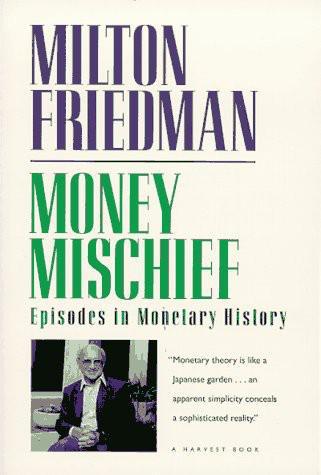
Money Mischief: Episodes in Monetary History
by
Milton Friedman
Published 1 Jan 1992
., [>] Forrest, William, [>] France avoids hyperinflation, [>]–[>] bimetallic standard in, [>], [>], [>], [>], [>], [>], [>]–[>], [>], [>], [>] gold standard in, [>], [>], [>]–[>], [>], [>] monetary reforms in, [>], [>] Revolution, [>], [>], [>] Franco-Prussian War (1870–71), [>], [>], [>] Free coinage eliminated, [>]–[>], [>] significance of, [>]–[>] Free-silver issue deflation and, [>]–[>] political opposition to, [>] political support for, [>], [>], [>] in presidential campaign of 1896, [>], [>], [>], [>]–[>], [>], [>], [>]–[>], [>]–[>], [>] Friedman, Milton 8c Anna Schwartz, A Monetary History of the United States, 1867–1960, [>], [>], [>], [>], [>], [>] Froman, Lewis, "Bimetallism Reconsidered," [>] Furness, William Henry, III, The Island of Stone Money, [>]–[>] Germany Allied occupation of, [>]–[>] gold standard in, [>], [>], [>], [>]–[>], [>], [>] hyperinflation in, [>]–[>], [>], [>], [>], [>] inflation rates in, [>]–[>], [>]–[>], [>], [>] postwar recovery in, [>] Giffen, Sir Robert, The Case Against Bimetallism, [>]–[>] Gold demonetized, [>]–[>] nonmonetary use of, [>]–[>], [>], [>] Roosevelt raises legal price of, [>] Gold-exchange standard, [>], [>] Gold points, [>], [>] Gold-silver price ratio, [>]–[>], [>]–[>], [>]–[>], [>]–[>], [>]–[>], [>]–[>] effect of silver standard on, [>]–[>] fixed by market, [>], [>], [>] in Great Britain, [>]–[>] legally defined, [>], [>] market points in, [>], [>] naive estimate of, under bimetallic standard (hypothetical continuation of), [>]–[>] political component of, [>]–[>], [>]–[>], [>], [>]–[>], [>], [>]–[>] Gold standard, [>]–[>], [>], [>], [>], [>], [>] adopted by Western nations, [>], [>], [>], [>]–[>], [>], [>]–[>], [>], [>], [>], [>] Coinage Act (1873) and, [>]–[>] and deflation, [>]–[>], [>]–[>], [>]–[>] economic effects of, [>], [>] industrialized nations abandon (1930s), [>], [>], [>] and international exchange rates, [>]–[>], [>] and low-value coins, [>] Redish on, [>]–[>] vs. silver standard, [>]–[>], [>]–[>], [>], [>]–[>], [>]–[>] Gold strikes, economic effects of, [>]–[>], [>], [>], [>], [>]–[>], [>]–[>], [>], [>], [>] Goods and services, output of, money supply and, [>]–[>], [>], [>] natural limits, [>] Government revenues from bonds, [>]–[>], [>] from inflation, [>]–[>], [>]–[>], [>] Government spending, and money supply, [>]–[>], [>], [>] Great Britain attempts to peg pound to German mark, [>]–[>] bimetallic standard in, [>], [>], [>], [>], [>], [>] goes off gold standard (1931), [>]–[>], [>] gold-silver price ratio in, [>]–[>] gold standard in, [>], [>]–[>], [>]–[>], [>]–[>] inflation rates in, [>], [>]–[>], [>]–[>], [>], [>] monetary reform in (1690s), [>] U.S. sells silver to, [>] Greek coinage, as commercial standard, [>]–[>] Greenback inflation, Civil War and, [>], [>]–[>], [>], [>]–[>], [>]–[>], [>] Greenback party, [>], [>] Greenback standard, [>], [>], [>]–[>], [>] Gresham's law, [>], [>] Hamilton, Alexander and Coinage Act of 1792, [>]–[>] supports bimetallic standard, [>]–[>], [>] Treasury Report on the Establishment of the Mint (1791), [>] Hanna, Mark, [>] Hetzel, Robert, on inflation cure, [>]–[>] High Price of Bullion, The (Ricardo), [>] History of Bimetallism in the United States, The (Laughlin), [>] History of Economic Analysis (Schumpeter), [>] Hofstadter, Richard, [>] Hong Kong currency pegged to British pound in, [>] currency pegged to U.S. dollar in, [>]–[>], [>] monetary policies of, [>]–[>] Hume, David, [>]–[>], [>] Hungary, hyperinflation in, [>] Hunt brothers, silver speculation by, [>] Hyperinflation, [>], [>], [>]. See also Inflation in Argentina, [>]–[>], [>], [>] in Bolivia, [>], [>], [>] in Brazil, [>]–[>], [>]–[>], [>]–[>], [>], [>] as cause of totalitarianism, [>]–[>] causes of, [>]–[>] in Chile, [>], [>], [>], [>], [>], [>] in China, [>], [>]–[>], [>], [>] following World War I, [>], [>], [>], [>]–[>], [>], [>], [>], [>], [>], [>] following World War II, [>]–[>], [>], [>], [>], [>], [>], [>], [>], [>], [>] in Germany, [>]–[>], [>], [>], [>], [>] in Hungary, [>] in Israel, [>], [>]–[>], [>] in Mexico, [>] in Nicaragua, [>] and paper money, [>]–[>] in Russia, [>]–[>], [>] war and, [>], [>] Income, nominal, [>] Income flow, [>], [>], [>]–[>], [>] India goes off gold standard (1931), [>] gold standard in, [>] silver standard in, [>], [>], [>], [>], [>], [>] Inflation.
…
It requires no financial operations by the Hong Kong currency board to keep it there, other than to live up to its obligation to give 7.8 Hong Kong dollars for 1 U.S. dollar, and conversely. And it can always do so because it holds a volume of U.S. dollar assets equal to the dollar value of the Hong Kong currency outstanding. An alternative arrangement is the one adopted by Chile and Israel: exchange rates between national currencies pegged at agreed values, the values to be maintained by the separate national central banks by altering ("coordinating" is the favorite term) domestic monetary policy appropriately. Many proponents of a common European currency regard a system of pegged exchange rates, such as the current European Monetary System (EMS), as a step toward a unified currency.

More Money Than God: Hedge Funds and the Making of a New Elite
by
Sebastian Mallaby
Published 9 Jun 2010
At the height of the sterling crisis, John Major effectively bought sterling from Stan Druckenmiller at a price both knew to be absurd. Major did this for a reason that appears nowhere in financial texts: He wanted to force political rivals to share responsibility for devaluation. Druckenmiller’s coup also served to show that currency pegs were vulnerable in a world of deep and liquid markets. During the 1950s and 1960s, the system of fixed currencies worked well because regulations restricted the flow of capital across borders; but now that these controls were gone, it was time for governments to accept the limits to their power over money.
…
Attempts to have it both ways via “flexible pegs” such as the exchange-rate mechanism were likely to backfire: The contrast between the United States and Europe illustrated the point vividly. When the Bush administration had tried and failed to lift the dollar in August, no calamity had ensued; the dollar was floating anyway, so there was no sudden break in its fortunes. But the currency pegs of Finland, Italy, Britain, and Sweden were a different matter; they presented speculators with targets that were too appealing to pass up, exposing their economies to wrenching dislocations. In committing to the exchange-rate mechanism, European governments had made a promise that they lacked the ability to keep.
…
They had bottled up currency movements until a power greater than themselves had blown the cork into their faces. The implications of a world featuring Druckenmiller and other macro investors were not immediately absorbed by policy makers. As happens after every financial crisis, the first instinct was to vilify the markets rather than to learn the awkward lessons that they teach: in this case, that currency pegs were dangerous. The week after the pound’s devaluation, when the French franc came under pressure, French finance minister Michel Sapin suggested that troublemaking traders should be guillotined, as during the French revolution.52 The following summer, after the exchange rate mechanism suffered another round of disruptions, French premier Edouard Balladur argued that governments had an economic and moral responsibility to curb speculators.
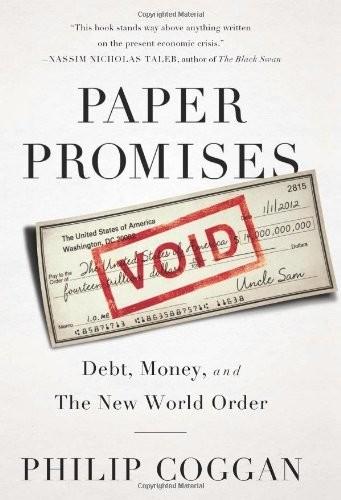
Paper Promises
by
Philip Coggan
Published 1 Dec 2011
If workers expect inflation to be 10 per cent, they will demand 10 per cent wage increases. That will push up the costs of businesses, forcing companies to increase prices. So the expectation of high inflation will by itself create inflation. In contrast, if workers expect the central bank to control inflation because of a need to maintain a currency peg, they will demand less in the way of wage increases. And that will reduce the cost pressures on businesses. The problem with such pegs, however, is the same one that confronted countries during the gold standard era. There may be occasions when one has to choose between maintaining the peg and avoiding a recession in the domestic economy.
…
The result was one of the biggest migrations in history as rural workers moved to the big cities. Much of the rest of the world may have abandoned the Bretton Woods approach but China did not. The Chinese Communist party had no intention of letting their interest or exchange rates be controlled by the markets; they opted for capital controls and a managed currency, pegged to the dollar. The corollary of this policy was that they accumulated a massive current-account surplus which (being China) the government controlled. These foreign-exchange reserves were then held in Treasury bonds and bills, making it easier for the US to finance its trade deficit. In his book Fixing Global Finance, Financial Times columnist Martin Wolf argues convincingly that the ‘savings glut’ of China and others was more responsible for the imbalance than American profligacy. 3 His argument is that a low level of real interest rates indicated an excess of desired saving over investment.
…
Another possibility is that QE has proved more successful in reflating the economies of the developing world than the developed. Countries which peg their currency to the dollar effectively import US monetary policy, since investors are enticed by the prospect of higher returns with reduced currency risk. Inevitably, a currency peg also means that interest rates in the pegged countries cannot diverge too far from each other (unless, like the Chinese, you have extensive capital controls). In 2010, many developing countries found themselves dealing with rising inflation rates, driven by higher commodity prices. In some cases, they also experienced sharply higher property prices and booming equity markets.
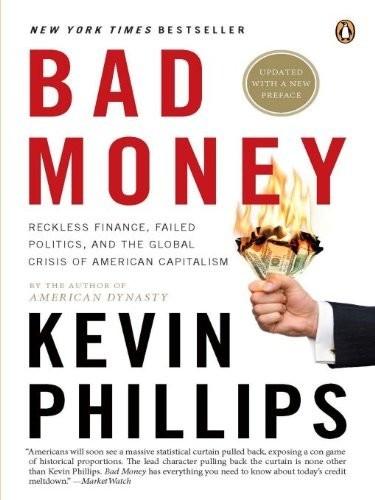
Bad Money: Reckless Finance, Failed Politics, and the Global Crisis of American Capitalism
by
Kevin Phillips
Published 31 Mar 2008
The alternative pursued in the late 1990s, which may yet boomerang, was to debase the consumer price index statistics maintained by the federal Bureau of Labor Statistics (BLS). This tinkering did not go unanswered. By 2007, most top officials of the central banks or new sovereign wealth funds of China, Japan, Russia, Saudi Arabia, Qatar, Kuwait, and the United Arab Emirates, nations with major U.S. dollar holdings or local currencies pegged to the dollar, would have heard of California-based Bill Gross, managing director of the Pacific Investment Management Company (PIMCO). Sometimes called the world’s leading bond investor, billionaire Gross was colloquially known as “the bond king.” Were he to send these bureaucrats notes saying, “My sense is that the [U.S.]
…
Global respect for the United States slumped drastically in 2002 and following the invasion of Iraq, and then again in 2005-7 as the survey data in the appendix so unfortunately illustrates. The value of the U.S. dollar has followed pretty much the same course. Between the deepening dislike of the United States in much of the Muslim world and the decline of the greenback, Persian Gulf states that once reinvested most of their oil revenues in U.S. bonds and kept their currencies pegged to the dollar no longer believe that Washington is a capital city that keeps faith. Given U.S. dollar policy in 2007, it is easy to see why. Ill repute from selling “contaminated” mortgage-backed securities and structured investment packages has been a body blow to Wall Street, damaging bank profits and prestige.
…
The last several years have seen mounting evidence of a global mercantilist or state-capitalist resurgence in more than a dozen economic dimensions: spreading resource nationalism, government-run national oil companies; a shrinking private oil market; internal energy subsidies; energy alliances that double as military organizations (the SCO); export subsidies; currency pegging; mercantilist buildups of Asian central bank currency reserves; the overshadowing of private investors by Asian sovereign wealth funds; the enlargement of foreign state-owned portions of Western commercial banks and investment banks; the mimicry of early-twentieth-century dollar diplomacy by twenty-first-century renminbi, ruble, and even Venezuelan bolivar diplomacy; political reregulation of capital flows; and apparent Third World success in hobbling or stalling two market triumphalist enforcement mechanisms—the International Monetary Fund and the World Trade Organization.

The Ascent of Money: A Financial History of the World
by
Niall Ferguson
Published 13 Nov 2007
Being on gold may also have reduced the costs of borrowing by committing governments to pursue prudent fiscal and monetary policies. The difficulty of pegging currencies to a single commodity based standard, or indeed to one another, is that policymakers are then forced to choose between free capital movements and an independent national monetary policy. They cannot have both. A currency peg can mean higher volatility in short-term interest rates, as the central bank seeks to keep the price of its money steady in terms of the peg. It can mean deflation, if the supply of the peg is constrained (as the supply of gold was relative to the demand for it in the 1870s and 1880s). And it can transmit financial crises (as happened throughout the restored gold standard after 1929).
…
The average 295 basis point spread between Argentine and British bonds in the 1880s scarcely compensated investors like the Barings for the risks they were running by investing in Argentina. In the same way, the average 664 basis point spread between Argentine and US bonds from 1998 to 2000 significantly underpriced the risk of default as the Cavallo currency peg began to crumble. When the default was announced, the spread rose to 5,500; by March 2002 it exceeded 7,000 basis points. After painfully protracted negotiations (there were 152 varieties of paper involved, denominated in six different currencies and governed by eight jurisdictions) the majority of approximately 500,000 creditors agreed to accept new bonds worth roughly 35 cents on the dollar, one of the most drastic ‘haircuts’ in the history of the bond market.68 So successful did Argentina’s default prove (economic growth has since surged while bond spreads are back in the 300-500 basis point range) that many economists were left to ponder why any sovereign debtor ever honours its commitments to foreign bondholders.69 The Resurrection of the Rentier In the 1920s, as we have seen, Keynes had predicted the ‘euthanasia of the rentier’, anticipating that inflation would eventually eat up all the paper wealth of those who had put their money in government bonds.
…
The answer is that, until recently, the best way for China to employ its vast population was through exporting manufactures to the insatiably spendthrift US consumer. To ensure that those exports were irresistibly cheap, China had to fight the tendency for the Chinese currency to strengthen against the dollar by buying literally billions of dollars on world markets - part of a system of Asian currency pegs that some commentators dubbed Bretton Woods II.109 In 2006 Chinese holdings of dollars almost certainly passed the trillion dollar mark. (Significantly, the net increase of China’s foreign exchange reserves almost exactly matched the net issuance of US Treasury and government agency bonds.) From America’s point of view, meanwhile, the best way of keeping the good times rolling in recent years has been to import cheap Chinese goods.
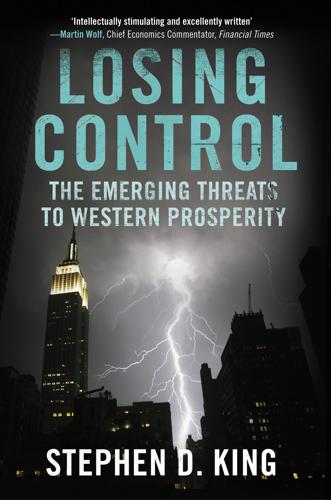
Losing Control: The Emerging Threats to Western Prosperity
by
Stephen D. King
Published 14 Jun 2010
When the Federal Reserve sets interest rates, it’s doing so not just for the US but also for huge chunks of the emerging world, whether it likes it or not. By ignoring their needs, global monetary conditions can end up either too tight or too loose. Fourth, monetary sovereignty is a myth. Whether through currency pegs, carry trades, unexpected price shocks or any one of a number of other examples, central banks are, individually, not as powerful as they’d like to believe. The gravitational pull being exercised by the emerging markets should change for ever the cosy Western attitudes towards monetary policy.
…
In effect, it reduces the monetary sovereignty of nation states while allowing them to maintain sovereignty in other areas, at least to the extent allowable under European Union law. Importantly, those who join the euro have voting rights on monetary policy. Unlike other currency arrangements – full-scale dollarizations and the various currency pegs arrangements described in Chapter 5 – membership of the euro gives a country a seat at the policy table. There is a loss of sovereignty, but it is not a complete loss. Meanwhile, the trials and tribulations of currency upheavals are, at least in theory, permanently removed.1 To date, euro membership is confined to members of the European Union and is contingent on countries meeting specified ‘convergence criteria’.
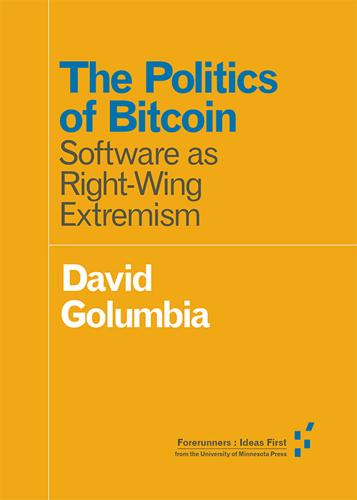
The Politics of Bitcoin: Software as Right-Wing Extremism
by
David Golumbia
Published 25 Sep 2016
Bitcoin advocates make repeated reference to the superiority of gold-backed money, despite the fact that governments fixed even the price of gold at many moments in history to tame volatility, and in the face of current stories about gold and silver prices being part of the Libor price-fixing scandal.[3] This preference for gold versus what they somewhat inaccurately call the “fiat currency” of nation-states only shows the ideological nature of their assertions, since gold exists right now, is widely traded and can be untraceable, largely resistant to counterfeiting, and yet is widely used (though not as a currency peg) by the very nation-states and central banks that Bitcoin advocates say they are in the process of dismantling. Just as revealing are statements like those by self-described “currency trader and economics nerd” Brian Kelly, who in The Bitcoin Big Bang inaccurately attributes the threefold nature of money to currency, and despite this, after laying out the case that Bitcoin only serves the medium-of-exchange function, suggests that “we are too tethered to the conventional definition of a currency as a medium of exchange, a store of value, and a unit of account” (2015, 13).
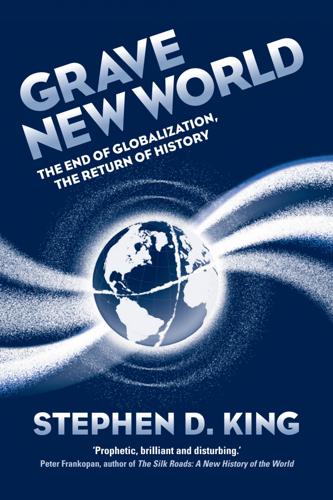
Grave New World: The End of Globalization, the Return of History
by
Stephen D. King
Published 22 May 2017
Think, for example, of the Mexican tequila crisis in the mid-1990s, the Asian crisis shortly thereafter, the 1998 Russian debt default, the collapse of Argentina’s currency board at the turn of the century and, most obviously, the global financial crisis. Given these experiences, an increasing number of emerging nations began to reject currency peg arrangements as a way of advertising their financial probity. Many shifted to floating currency arrangements, aware that attempts to fix foreign exchange rates in a world of free-flowing cross-border capital had only given rise to repeated booms and busts. And it is not only emerging nations that have had this problem.
…
Constantinople retaliated, issuing coins with the emperor relegated to the reverse and Jesus Christ on the front. Of the three surviving gold coins from the reign of Offa, king of Mercia from 757 to 796, one is a copy of an Abbasid dinar of 774, with Latin on one side and Arabic on the other, perhaps an early attempt at a currency peg arrangement: at the time, England was, at best, an emerging market and, for many, not to be trusted. Meanwhile, there were plenty of opportunities for currency debasement. Before the advent of fiat money, coins themselves were made of precious metal, mostly gold and silver. Some coins were ‘clipped’, thereby reducing the precious metal content (one reason why, even today, many coins have ridged edges).
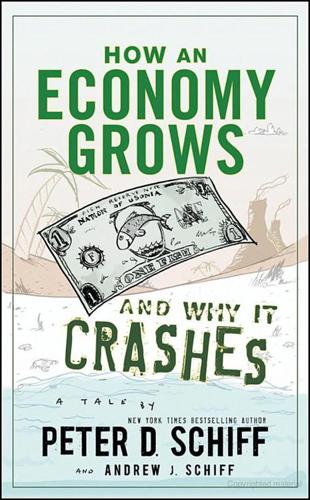
How an Economy Grows and Why It Crashes
by
Peter D. Schiff
and
Andrew J. Schiff
Published 2 May 2010
This gives a competitive opportunity to countries with weak currencies to start selling some of their products into that market. When they sell more, demand for their currencies rises. This currency counterweight should keep runaway trade imbalances in check. But the dollar’s reserve status, and the decision of the Chinese government to maintain the currency peg, has gummed up the machinery and has allowed the situation to grow dangerously out of kilter. CHAPTER 13 CLOSING THE FISH WINDOW Eventually, as Fish Reserve Notes continued to pour out of Usonia and pile up on islands throughout the ocean, some foreign holders began questioning the ability of Usonia to redeem them with actual fish.

The Road to Ruin: The Global Elites' Secret Plan for the Next Financial Crisis
by
James Rickards
Published 15 Nov 2016
Bretton Woods participants were allowed to use capital controls to maintain dollar reserves and limit volatile capital flows in order to support their obligations under the fixed rate system. Capital controls in major Western economies were lifted in stages beginning in 1958. Full convertibility of all major currencies was not achieved until 1964. Currency pegs to the dollar were not immutable. Members could apply for exchange rate adjustments under IMF supervision. The IMF would first offer to make temporary funding available to the nation whose currency was under stress. The goal was to give that nation time to make structural reforms to improve its balance of trade, and bolster foreign exchange reserves so the peg could be maintained.
…
Acute eurodollar interbank funding problems at major Italian banks beginning in June 2016 are additional straws in the wind. Net sales of U.S. Treasury securities by China, Russia, and Saudi Arabia in the first half of 2016 were evidence of those nations’ need to obtain dollars to satisfy capital outflow demands or maintain nonsustainable currency pegs. The most intriguing piece of evidence for a dollar shortage is the tangled trio of prices in five-year TIPS, gold, and ten-year Treasury notes. TIPS stands for Treasury Inflation Protected Securities, a special type of Treasury note where the principal is indexed to inflation. This means the TIPS yield is a real yield; there is no need to add an inflation premium to a nominal yield because principal is already protected against inflation.

Unfinished Business
by
Tamim Bayoumi
The Werner Report was part of an effort to deepen as well as widen the European Community to create a counterweight to the US dollar. Unlike the earlier gold standard, the Bretton Woods system set up at the end of World War II involved a two-tiered global system, with the dollar pegged to gold and other currencies pegged to the dollar. Since the dollar was the major international reserve asset (with sterling playing a smaller and diminishing role as the British Empire faded) the United States was guaranteed a steady increase in demand for its assets as the need for reserves expanded along with the global economy.
…
This led to an influx of plants with large amounts of machinery that benefited from subsidies but created few jobs for unemployed East Germans. The Bundesbank responded to German economic overheating by raising interest rates aggressively, which left Germany’s partners with the conundrum of how far to raise rates to defend the currency peg at the cost of slowing growth. The final outcome of these strains was a crisis in the Exchange Rate Mechanism that resulted in the ejection of the British pound and the Italian lira in 1992 (the lira rejoined in 1996) followed by a face-saving widening of the intervention bands from 2¼ percent to 15 percent to avoid French ejection in 1993.
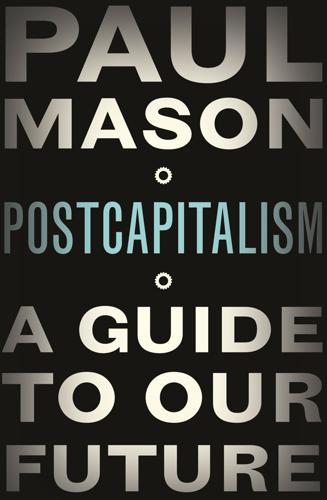
Postcapitalism: A Guide to Our Future
by
Paul Mason
Published 29 Jul 2015
It is, though few will admit it, ‘Damn, nobody believes in our state any more.’ The entire system is dependent on the credibility of the state that issues the notes. And in the modern global economy that credibility rests not just on single states but on a multilayered system of debts, payment mechanisms, informal currency pegs, formal currency unions like the Euro, and huge reserves of foreign exchange accumulated by states as insurance in case the system collapses. The real problem with fiat money comes if, or when, this multilateral system falls apart. But that lies in the future. For now, what we know is that fiat money – when combined with free-market economics – is a machine for producing boom-and-bust cycles.
…
The system was overtly stacked in favour of the USA: not only was it the biggest economy in the world, it had an infrastructure undamaged by the war and – for now – the highest productivity. It also got to appoint the boss of the Fund. The system was also stacked in favour of inflation. Because the link to gold was indirect, because there was leeway in the currency peg, and because the rules on balanced trade and structural reform were loose, the system was designed to produce inflation. This was recognized by the free-market right even before the train to Bretton Woods left the station. The journalist Henry Hazlitt, a confidant of free-market guru Ludwig von Mises, railed against the plan in the New York Times: ‘It would be difficult to think of a more serious threat to world stability and full production than the continual prospect of a uniform world inflation to which the politicians of every country would be so easily tempted.’15 But this was a system also stacked against high finance.
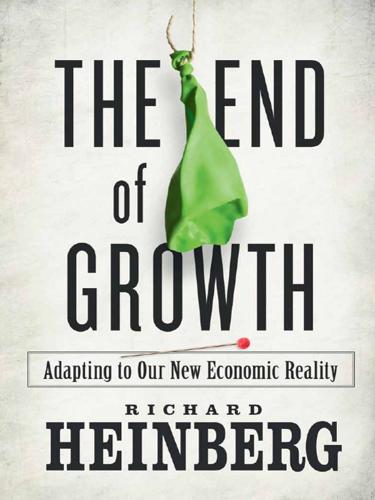
The End of Growth: Adapting to Our New Economic Reality
by
Richard Heinberg
Published 1 Jun 2011
In 1999, most members of the European Union opted into a common currency, the euro, that floated in value like the Japanese yen. One of the motives for this historic monetary unification was the desire for a stronger currency that would be more stable and competitive relative to the US dollar. For decades, China has been one of the countries that kept its currency pegged to the dollar at a fixed rate. This enabled the country to keep its currency’s value low, making Chinese exports cheap and attractive — especially to the United States. However, for smaller countries, fixed exchange rates have meant vulnerability to currency attacks. If speculators decide to sell large amounts of a country’s currency, that country can defend its currency’s value only by holding a large cache of foreign reserves sufficient to keep its fixed exchange rate in place.
…
See Marvin Friend, “A Short History of US Monetary Policy,” The Powell Center, powellcenter.org/econEssay/history.html. 23. Bill Black, “The EU’s New Bailout Plan Will Exacerbate Political Crises,” Business Insider, posted December 13, 2010. 24. See Wikipedia.org, “Foreign Exchange Market.” 25. To read more, see Edward Harrison, “Currencies Pegged to the Dollar Under Pressure to Drop Peg,” CreditWritedowns.com, posted October 13, 2009; Michael Hudson, “Why the US Has Launched a New Financial World War — And How the Rest of the World Will Fight Back,” alternet.org, posted October 12, 2010. 26. Michael Sauga and Peter Müller, “The US Has Lived on Borrowed Money For Too Long,” an interview with German Finance Minister Schäuble, Spiegel online, posted November 8, 2010. 27.

The Price of Time: The Real Story of Interest
by
Edward Chancellor
Published 15 Aug 2022
The less they succeed, the more they’re tried. There is no “exit”.’17 Not every monetary innovation was concocted in Washington, DC. The Bank of England came up with ‘credit easing’. The ECB had its ‘long-term refinancing operations’, ‘securities markets programme’ and ‘outright monetary transactions’. The currency pegs of the Danish and Swiss central banks provided them with an excuse to buy foreign securities with newly printed money. The Bank of Japan, which had been the first to initiate quantitative easing (in March 2001), later came up with ‘quantitative and qualitative easing’, to which it added ‘yield-curve control’.18 While interest rates in the United States and the rest of the Anglophone world never went below the ‘zero lower bound’, central banks in Europe and Japan crossed the Rubicon, venturing into the unknown territory of negative rates.
…
It was only fitting, therefore, that the world’s oldest central bank should also be the first to put negative interest rates into practice. In July 2009 – less than a year after the Lehman’s bankruptcy– the Riksbank set a rate of minus 0.25 per cent on deposits. Once the taboo was broken, other central banks followed suit. In July 2012, Denmark introduced a negative interest rate to help maintain the krone’s currency peg with a crisis-stricken euro. Two years later, the European Central Bank, whose nineteen members of the monetary union contained a population of some 340 million persons, brought its own deposit rate below zero. Switzerland followed. Having long rejected calls for negative rates, the Bank of Japan shocked financial markets by announcing in January 2016 that it too would impose a negative rate on deposits.
…
., 181 Egypt, 77, 78, 255, 262 Einstein, Albert, 8 Elizabeth II, Queen, 114 Ellington Capital Management, 223 Emden, Paul, 80* emerging markets: Brazilian crash (2012–13), 257–8; BRICs, 254–5, 257–8; capital controls return after 2008, 262, 291; capital flight from (starting 2015), 262, 285–6; demand for industrial commodities, 128; epic corruption scandals, 258; and extended supply chains, 261; flooding across South East Asia (2010), 255; ‘Fragile Five’, 258–9; growth of foreign exchange reserves, 252, 253, 254–5, 256; impact of ultra-low interest rates on, xxiii, 253–60, 262–3; international carry Trade, 137, 237–8; overheating during 2010, 255, 256; post-crisis capital flows into, xxiii, 253–9, 262–3; and recent phase of globalization, 260–61; recovery from 2008 crisis, 124; and savings glut hypothesis, 129, 268–9; ‘second phase of global liquidity’ after 2008 crisis, 253–9, 262–3; and taper tantrum (June 2013), xxiii, 137, 239, 256–7, 259, 263; Turkish debt, 258–60; vulnerability to US monetary policy, 137, 262–3, 267–8 see also China employment/labour markets, xx, 151–2, 240, 260–61, 260*, 296; after 2008 crisis, 210, 211; new insecurity, 211, 298 Erdogan, Recep Tyyip, 259 European Central Bank (ECB), 144, 145, 147, 239, 240, 293; inflation targeting, 119, 120, 122–3; and quantitative easing, 146, 241, 242; sets negative rate, 147, 192–3, 244, 299 European Union, 187, 241, 262 Eurozone, 124, 150–51, 226; and political sovereignty, 293, 293†; sovereign debt crisis (from 2010), 144–8, 226, 238, 239, 241, 273, 293 Evans, David Morier, 73 Evelyn, John, 36, 45 Evergrande (Chinese developer), 279, 288, 310 executive compensation schemes, 152, 162, 163–4, 170, 204, 206, 207 Extinction Rebellion, 201 ExxonMobil, 166 Fang’s Money House, Wenzhou, 281–2 farming: agricultural cycle, 11, 14, 88; and ‘Bank of John Deere’, 167; barley loans in ancient Mesopotamia, 5–6, 6*, 7, 8, 10, 11, 14; bubbles in post-crisis decade, 173; in China, 283; and language of interest, 4–5; loans related to consumption, 6, 25; US deflation of 1890s, 99 Federal Reserve, US: asymmetrical approach to rates, 136–7; as carry trader, 222; cognitive dissonance in, 118–19; Federal Reserve Act (1914), 83; ‘forgotten depression’ (1921), 84, 86, 100, 143; forward guidance policy, 131*, 133, 238, 239, 240, 241; and Gold Exchange Standard, 85, 87, 90*; the ‘Greenspan put’, 111, 186; impact on foreign countries, 137, 239, 240–41, 255–6, 259, 262–3, 267–8, 285; inflation targeting, 119, 120, 241; Long Island meeting (1927), 82–3, 88, 92; mandates of, 240, 262; and March 2020 crash, 305–6; Objectives of Monetary Policy (1937), 97; Open Market Committee (FOMC), 109, 112–13, 115†, 120, 164, 228, 238, 239, 240; Operation Twist (2011), 131*, 238; parallel with US Forest Service, 154–5; and post-Great War inflation, 84; as the ‘price of leverage’, xxi–xxii; quantitative easing by, 12*, 76, 131*, 137, 175, 215, 228, 236, 238, 239–40, 241; raised rates announcement (2015), 138, 239; reaches ‘zero lower bound’ (2008), 243–4; response to 1929 Crash, 98, 100, 101, 108; suggested as responsible for 2008 crisis, 116–17, 118–19, 155, 204, 226–7; TALF fund, 175; taper tantrum (June 2013), xxiii, 137, 239, 256–7, 259, 263; ultra-easy money after 2008 crisis, xxi, 60, 124, 131–8, 146, 149, 152–5, 181–3, 206–17, 221–4, 230, 235–41, 243–4, 262, 291–2; Paul Volcker runs, 108–9, 145; Janet Yellen runs, 120 see also Bernanke, Ben; Greenspan, Alan Feldstein, Martin, 119 Ferri, Giovanni, 277* Fetter, Frank, 30 Field, Alexander, The Great Leap Forward, 142–3 financial crisis (2008): accelerates financialization, 182–3; and complex debt securities, 116, 117–18, 231; ‘crunch porn’ on causes of, 114; economists who anticipated crisis, 113–14, 132; failure of unconventional monetary policies after, xxi, xxii, 43–4, 291–4, 298–9, 301–3; Fed’s monetary policy as suggested cause, 116–17, 118–19, 155, 204, 226–7; generational impact of, 211–12, 213; as ‘giant carry trade gone wrong’, 253–5; global causes of, 117–18; Icelandic recovery from, 301–2; and inequality, 204, 205–17, 299; interest at lowest level in five millennia during, xxi, 243–4, 247; Law’s System compared to, 49, 60–61; low/stable inflation at time of, 134, 135; monetary policy’s role in run-up downplayed, 115–16, 115*, 115†; and quoting of Bagehot, 76; recovery of lost industrial output after, 124; regulatory interpretation of, 114–15, 117; and return of the state, 292–5, 297, 298; return to ‘yield-chasing’ after, 221–6, 230–31, 233–4, 237–8; the rich as chief beneficiaries of, 206–10; savings glut hypothesis, 115–16, 117, 126, 128–9, 132, 191, 252, 268–9; ‘second phase of global liquidity’ after, 253–9, 262–3; unwinding of carry trades during, 221, 227; warnings from BIS economists before, 113–14, 131–4, 135–9 see also Great Recession financial derivatives market, 225–6 financial engineering: buybacks, 53, 152, 163–6, 167, 169, 170–71, 183, 224; crowding out of real economy by, 158–9, 160, 166–71, 182–3, 185, 237; ‘funding gap’ as impetus, 164, 176–7, 291; merger ‘tsunami’ after 2008 crisis, 160–63, 161*, 168–70, 237, 298; ‘promoter’s profit’ concept, 158–9, 160, 161, 164; and ‘shareholder value’, 163–6, 167, 170–71; Truman Show as allegory for bubble economy, 185–7; use of leverage, 111, 116, 149, 155, 158–71, 204, 207, 223, 237, 291; zaitech in Japan, 106, 182, 185 financial repression: in China, 264–5, 265*, 266–81, 268*, 283, 286–9, 292; and inequality, 287–8; McKinnon coins term, 264; political aspects, 265, 265*, 286–9, 292; returns to West after 2008 crisis, 291–3; after Second World War, 290–91, 302 financial sector: bond markets as ‘broken (2014), 227; complex securitizations, 116, 117–18, 221, 227, 231; decades-long bull market from early 1980s, 203–4; economics as fundamentally monetary, 132, 138–9; Edmunds’ ‘New World Wealth Machine’, 181–2; expansion in 1920s USA, 203; finance as leading growth, 266; financial mania of 1860s, 72–4, 75–6; fixed-income bonds, 68–9, 193, 219, 222, 225, 226; foreign securities/loans, 66, 77–8, 91; investment trusts appear (1880s), 79; liquidity traps, 114; mighty borrowers within, 202; profits bubble in post-crisis USA, 183, 183†, 185, 211; robber baron era in USA, 156–9, 203; stability as destabilizing, 82, 143, 233, 263, 285; stock market bubble in post-crisis decade, 175–7, 176*; trust companies in US, 83–4, 84*; US bond market ‘flash crash’ (2014), 138; and volatility, 153, 228–30, 233, 234, 254, 304, 305; volatility as asset class, 229–30, 229*, 233, 234, 304, 305; ‘Volmageddon’ (5 February 2018), 229–30, 234 see also banking and entries for individual institutions/events financial system, international: Asian crisis, 114, 252, 278; Basel banking rules, 232; Borio on ‘persistent expansionary bias’, 262–3; complex mortgage securities, 116, 117–18; crash (12 March 2020), 304–6; ‘excess elasticity’ of, 137; global financial imbalances, 137, 138; Louvre Accord (1987), 105–6; stock market crash (October 1987), 106, 110–11, 229 financialization, 162–71, 182–3, 185, 203–8, 237 Fink, Larry, 209, 246 Finley, Sir Moses, Economy and Society in Ancient Greece (1981), 18* fire-fighting services, 154–5 First World War, 84, 85 Fisher, Irving: and debt-deflation, 98–9, 100, 119, 280; first to refer to ‘real’ interest rate, 88–9, 219*; founds Stable Money League (1921), 87, 96; and Gesell’s rusting money, 243, 246; on interest, 29–30, 82, 189, 189*, 201; losses in 1929 crash, 94; monetarist view of 1929 Crash, 98–9, 100, 101, 108; ‘money illusion’ concept, 87*; on nature’s production, 4–5; on negative interest, 246; The Theory of Interest, xxiv, xxv, xxvi*, 16, 173 Fisher, Peter, 194 Fisher, Richard, 164 Fitzgerald, F. Scott, 203 Florence, 21–3 ‘Fordism’, 89 Fordyce, Alexander, 63 foreign exchanges, xxv; currencies pegged to the dollar, 251, 252, 253; dollar as global reserve currency, xxiii, 118, 239, 251–2, 253, 261, 262–3, 267; French currency during Mississippi bubble, 56–7; growth of reserves, 252, 253, 254–5, 256; international bills of exchange, 24; Louvre Accord (1987), 105–6; printing of money to acquire reserves, 137, 252; Shanghai Accord (2016), 241, 241*; undervalued Chinese yuan, 267–8, 270, 271 Forest Service, US, 154–5 France: 1848 Revolution, xix; allocation of capital in Bretton Woods era, 291; French Louisiana, 50, 52; Law and depreciated government debt, 48, 50, 51–2, 59, 65, 69; Law and paper money, xxii, 47, 52, 55–8; Law as Finance Minister, 46, 57; Law establishes General Bank (1716), 49–50; Law’s Mississippi Company, 46, 50–61, 65, 68, 172–3, 178, 202–3, 273, 286, 298, 308; Les Trente Glorieuses, 302; and long-term bonds, 225; Palais Mazarin, Paris, 54, 54*; rentier term, 7; Revolutionary/Napoleonic Wars, 41–2, 69–70; Royal Bank, 50, 52, 53, 57, 58; war with England (1690s), 38 Francis, Pope, 201, 213 Franklin, Benjamin, Advice to a Young Tradesman (1748), xviii, 22, 28, 190 fraud, 64, 80, 149 free market economics, 95–6, 295–6 Freud, Lucien, 208 Frick, Henry, 157–8 Fridson, Martin, 146 Friedman, Milton, 98, 99, 101, 131 Fugger, Jakob, 202 Fullarton, John, 67–8, 71, 75 Gage, Lyman, 83, 311 Galai, Dan, 228–9 Galbraith, John Kenneth, 287 Galiani, Ferdinando, 218–19, 220, 221, 222, 233 GameStop (retailer), 307 Garber, Peter, 60 Gehringer, Agnieszka, 134–5 Geithner, Tim, 76 General Electric, 156, 157, 159, 170–71 General Motors, 90, 166–7 General Strike (UK, 1926), 86 Genoa, 22, 23, 35, 47–8, 49 George, Henry, 243, 246, 260* Gergy, Jacques Vincent, Count of, 60 Germany, 7, 159, 225, 291, 299; economy in 1920s, 82, 91, 92, 93; and Eurozone crisis, 144–5; negative interest rates in, 192–3, 245; Wirtschaftswunder, 302 Gesell, Silvio, 242–3, 246, 294 ‘gig economy’, 149 Gladstone, William, 40, 72, 76* Glahn, Richard von, 265* Glass–Steagall Act, 232 Global Asset Management, 228, 228* globalization: feedback loop with interest rates, 260–61, 311; first wave of (from 1860s), 260, 311; global aspect of inflation, 122; and great bubbles of history, 263; political backlash against in West, 261; recent phase (from 1980), 260–61, 311 Goetzmann, William, 8†, 14, 60, 247 Gold Exchange Standard, 11, 85, 85*, 86, 87, 90*, 261 Gold Standard, 43, 82, 84–5, 85*, 86, 98, 99, 133, 251 Goldman Sachs, 175, 255, 258 Goodhart, Charles, 105, 121, 127, 246 Gopinath, Gita, 144 Gordon, Robert, 128 Goschen, George, 77, 78–9 Goschen conversion (1888), 65*, 79 Graham, Benjamin, 90–91 Grant, Albert, 73 Grant, James, 82, 118, 141, 148, 191, 194, 230–31, 297; on Fed’s dual mandate, 155; on negative-yielding bonds, 226; on radical monetary gimmicks, 242; on regulation, 232; The Forgotten Depression, 100 Grantham, Jeremy, 183 Great Depression, 98–101, 98*, 105, 108, 125–6, 129, 142–3, 299 see also Wall Street Crash (October 1929) Great Fire of London (1666), 33 the ‘Great Moderation’, 112 Great Recession, 146, 152–3, 181–2, 206–17, 221–4; and secular stagnation argument, 124–5, 126–8, 131; slow recovery in developed world, 124–5, 126–9, 131–2, 150–53, 298–9, 304; and support for democracy, 299 see also financial crisis (2008) Greece, 144–5, 147, 148*, 253, 262, 293; ancient/classical, 6, 9, 10–11, 11*, 13, 13, 17–18, 18†, 20, 200, 200*, 219 Green, Sir Philip, 197 Greensill, Lex, 228* Greenspan, Alan, 110, 132, 226; Fed’s focus on near-term inflation, 110–14; interest rates under, 110–15, 117, 134–5, 134*, 162, 186, 190–91, 204, 226–7, 238, 252–3, 267 Gresham’s Law, 145–6, 224 Griffin, Ken, 209 Gross, Bill, 217, 221, 235, 236, 246 Grotius, Hugo, 40 Guinness (Irish brewer), 79 Gundlach, Jeffrey, 246 Gupta, Sanjeev, 228* H2O (investment company), 228 Hadley, Arthur, 140, 157 Haldane, Andrew, 168, 232, 233, 311 Hamilton, Earl J., 48, 58, 58* Hammurabi’s Code, 9 Hanauer, Nick, 217 Hankey, Thomson, Principles of Banking, 75–6 Hansen, Alvin, 124–5, 126, 127, 128, 129 Harding, William, 84 Harman, Jeremiah, 66 Harriman, Edward H., 157, 158 Hartnett, Michael, 200 Hawtrey, Ralph, 87 Hayek, Friedrich: and concept of time, 32, 95; critique of monetary policy in 1920s, 92, 96, 96*, 101, 105, 108, 114, 133; and deflation/inflation, 100, 101, 105, 113, 133–4, 302; and inequality, 296, 299; interpretation of 1929 Crash, 101, 105; on money, 294, 295, 297*, 312; and ‘natural rate’ of interest, 32, 96, 96*, 133, 269; rejects price stabilization policy, 92, 96, 96*, 108, 133; view of intellectuals, 297, 302–3; view of interest, 297–8, 301; The Denationalisation of Money (1990), 297*; Monetary Theory and the Trade Cycle (1929), 96; ‘The Pretence of Knowledge’ (Nobel prize lecture), 302–3; The Road to Serfdom (1944), 295–6, 298, 302 Haywood, Tim, 228* Hazlitt, Henry, Economics in One Lesson (1946), xx hedge funds, 166, 169–70, 183, 207, 209, 229, 304 Heinz, H.
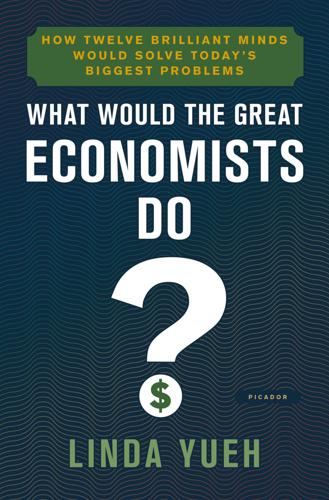
What Would the Great Economists Do?: How Twelve Brilliant Minds Would Solve Today's Biggest Problems
by
Linda Yueh
Published 4 Jun 2018
Roosevelt won a landslide victory against Herbert Hoover, with the Democrats also taking large majorities in both Houses of Congress. However, FDR didn’t assume office until March 1933 and in the meantime, bank failures continued. It was widely believed that FDR would devalue the dollar or leave the gold standard altogether. It was costly to maintain a currency peg to gold, especially when the economy was in serious trouble. This encouraged the large-scale conversion of dollars into gold, putting further pressure on the banking system as dollar deposits were withdrawn. One of FDR’s first acts on taking office was a week-long banking holiday from which 5,000 banks never reopened their doors.
…
Even though that was a crisis involving developed economies, there are similar features to the Latin American episode. Many Britons still recall Black Wednesday, when sterling and other currencies, such as the Italian lira, left the peg to the Deutschmark (DM) that they had signed up to two years earlier. A loss of market confidence meant that to keep their currencies pegged would have meant raising interest rates to unacceptable levels if investors were to be persuaded to buy sterling and maintain the exchange-rate peg. UK interest rates had reached 15 per cent, and the impact on economic growth of staying in the ERM would simply have been too detrimental during a recession.
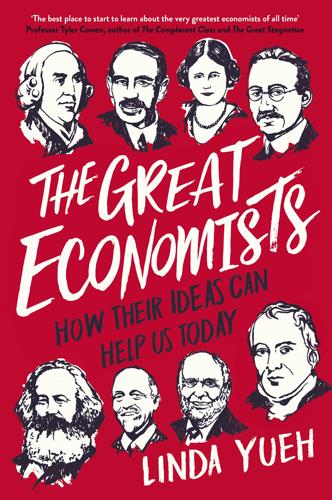
The Great Economists: How Their Ideas Can Help Us Today
by
Linda Yueh
Published 15 Mar 2018
Roosevelt won a landslide victory against Herbert Hoover, with the Democrats also taking large majorities in both Houses of Congress. However, FDR didn’t assume office until March 1933 and in the meantime, bank failures continued. It was widely believed that FDR would devalue the dollar or leave the gold standard altogether. It was costly to maintain a currency peg to gold, especially when the economy was in serious trouble. This encouraged the large-scale conversion of dollars into gold, putting further pressure on the banking system as dollar deposits were withdrawn. One of FDR’s first acts on taking office was a week-long banking holiday from which 5,000 banks never reopened their doors.
…
Even though that was a crisis involving developed economies, there are similar features to the Latin American episode. Many Britons still recall Black Wednesday, when sterling and other currencies, such as the Italian lira, left the peg to the Deutschmark (DM) that they had signed up to two years earlier. A loss of market confidence meant that to keep their currencies pegged would have meant raising interest rates to unacceptable levels if investors were to be persuaded to buy sterling and maintain the exchange-rate peg. UK interest rates had reached 15 per cent, and the impact on economic growth of staying in the ERM would simply have been too detrimental during a recession.
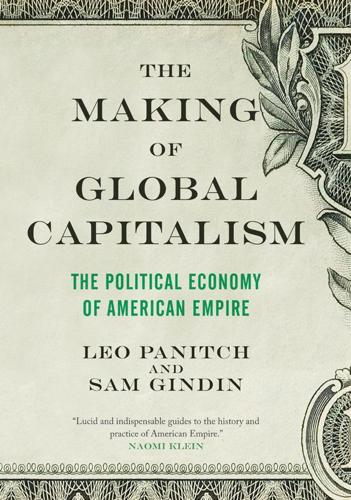
The Making of Global Capitalism
by
Leo Panitch
and
Sam Gindin
Published 8 Oct 2012
Thai state initiatives to liberalize and expand its financial sector (underwritten by high interest rates and the pegging of the baht to the US dollar) induced ever more foreign lending, which “served the interest of various fractions of local and transnational financial capital in different ways.”36 Growth rates averaging almost 9 percent in the decade before the onset of the crisis were also fueled by the domestic real-estate bubble produced by the alliance of Japanese developers with the Thai capitalists and army generals who controlled the construction industry. China’s devaluation of the renminbi in 1994 and the devaluation of the yen in 1995 particularly affected Thailand’s pattern of cheap exports. The Bank of Thailand responded by using its reserves to defend the currency peg with the dollar, making it especially vulnerable to any outflow of capital. All it took to produce a massive run on the baht and a collapse in Thai asset prices was a suggestion from the Japanese Finance Ministry in early 1997 that it might hike interest rates to halt the yen’s fall. In short order, the massive capital flows that had earlier poured in were suddenly a dangerous liability.
…
Even more foreboding was the prospect that developing states might resort to extensive exchange controls, just as Malaysia did two weeks after the Russian default. Indicative of the breadth of the contagion was that international banks, which had earlier in the year shifted capital from Asia to Latin America, now began to pull their loans, and especially demanded higher premiums on Brazil’s bonds, fearing that its currency peg to the dollar would have to be abandoned. But the depth of the contagion had already been registered on Wall Street, as a massive flight to the safety of US Treasury bonds after the Russian default precipitated a sharp upward revaluation of risk in bond and foreign-exchange markets, and in the derivative markets based on them.
…
In contrast to what had been so common in the 1990s, it was quite remarkable that, before 2007, the Bush administration faced only two serious financial crises, both occurring in its first year.6 Like Rubin before him with the Mexican crisis, O’Neill had barely settled into his office at the Treasury when he was confronted by the outbreak of the most severe financial crisis in modern Turkish history. With the Turkish government’s attempts to maintain a currency peg undermined by financial markets’ response to its rising public debt, there was no question of letting the markets decide the fate of this crucially strategic US ally. But the US Treasury was content to leave it to the IMF, which had provided conditional loans to Turkey on eighteen occasions since 1958, to contain the Turkish crisis.7 Nevertheless, when the Argentine crisis came to a head only six months later, in August 2001, the Treasury’s behavior “encapsulated the degree to which the United States was making policy for the IMF.”
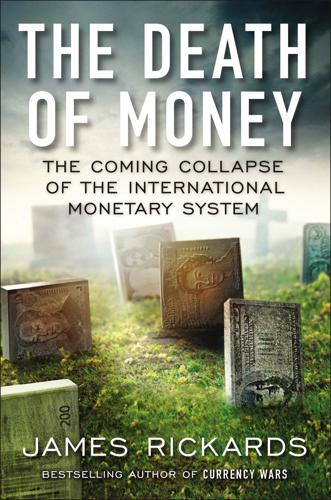
The Death of Money: The Coming Collapse of the International Monetary System
by
James Rickards
Published 7 Apr 2014
Experiments are typically conducted by controlling certain variables among all participants and measuring differences in the factors that are not controlled. The first control variable in this real-world experiment is that neither the BELLs nor the GIIPS devalued their currencies. The BELLs have maintained a local currency peg to the euro and have not devalued. Indeed, Estonia actually joined the euro on January 1, 2011, at the height of anti-euro hysteria, and Latvia joined on January 1, 2014. The second control variable is the depth of the economic collapse in both the BELLs and the GIIPS beginning in 2008 and continuing into 2009.
…
Syed Abul Basher, “Regional Initiative in the Gulf: Search for a GCC Currency,” paper presented at the International Institute for Strategic Studies Seminar, Bahrain, September 30, 2012, http://www.iiss.org/en/events/geo-economics%20seminars/geo-economics%20seminars/archive/currencies-of-power-and-the-power-of-currencies-38db. A logical extension, then, of the SDR basket approach . . . : The author is indebted to Dr. Syed Abul Basher for the suggestion and explication of the SDR-plus-oil approach to the currency peg, ibid. the United States would continue its loose monetary policy . . . : Ben S. Bernanke, “U.S. Monetary Policy and International Implications,” remarks at IMF–Bank of Japan seminar, Tokyo, October 14, 2012, http://www.federalreserve.gov/newsevents/speech/bernanke20121014a.htm. “Today most advanced economies remain . . .”: Ben S.
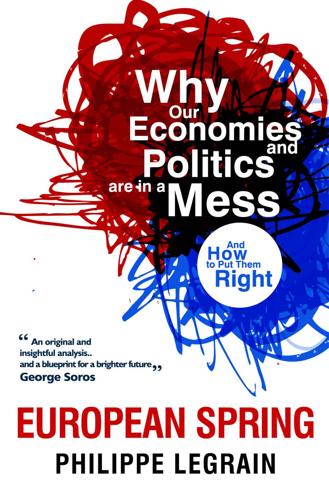
European Spring: Why Our Economies and Politics Are in a Mess - and How to Put Them Right
by
Philippe Legrain
Published 22 Apr 2014
The euro had previously been perceived as an irreversible currency union – like the United States, where nobody thinks that a default by the state of California or the city of Detroit will lead to it abandoning the dollar. Instead, the euro became, in effect, a system of fixed exchange rates that is extremely costly – but not impossible – to break. In the exchange-rate mechanism (ERM), which preceded the euro, speculation about devaluation was expressed as pressure on a currency peg (as during the ERM crisis in 1992–3); now it was expressed as pressure on sovereign bond yields and bank funding costs as capital fled vulnerable eurozone economies to Germany. This capital flight caused interest rates to soar and credit to contract across southern Europe, deepening the recession.
…
This deceptively stable environment tricked policymakers into thinking they could plan economic development while fine-tuning demand to maintain full employment. But the system broke down in the early 1970s as the post-war economic boom ran out of steam, efforts to boost employment resulted in ever higher inflation, the Bretton Woods system of currencies pegged to the US dollar collapsed and the oil shocks of 1973–74 resulted in the previously unthinkable combination of stagnation and inflation: stagflation. In this new stop-go world, controlling inflation became the top priority of economic policy and monetary policy the preferred tool for economic management, with central banks causing short, sharp recessions by raising interest rates whenever inflation looked like getting out of hand.

More: The 10,000-Year Rise of the World Economy
by
Philip Coggan
Published 6 Feb 2020
All currency systems are subject to a trilemma, in which countries can choose two options but not all three. The three options are a fixed exchange rate, an independent monetary policy, and free capital movement. Under the gold standard, the currency was fixed and capital could flow freely. But monetary policy had to be adjusted in order to maintain the currency peg, with interest rates rising or falling regardless of domestic economic conditions. The Bretton Woods system chose a different pairing. Exchange rates were fixed but countries had freedom (with some limits) to adjust their own monetary policy. The only way such a system could work was by restricting capital flows.
…
In a world where the most talented employees are mobile, and where companies can shift production to other countries with ease, it is hard for politicians to push up tax rates very far. Finance reigns supreme Under the Bretton Woods system, capital movements were restricted because of the need to protect currency pegs. But once currencies were free to float, there was no need to retain these restrictions. The US, Canada, Germany and Switzerland all abolished controls quite quickly; Britain followed suit under the Thatcher government. This shift fitted into the philosophy espoused by Milton Friedman. If capital was free to move, it could be invested in the most profitable opportunities around the world, and this would improve economic growth in the long term.
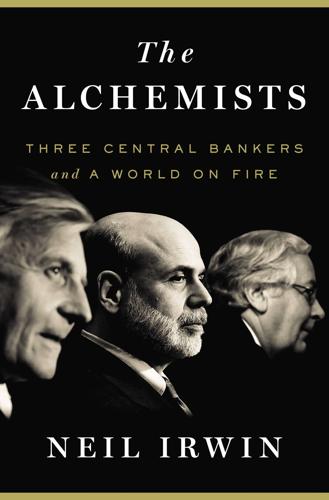
The Alchemists: Three Central Bankers and a World on Fire
by
Neil Irwin
Published 4 Apr 2013
He faced an unpleasant choice: He could either raise interest rates in a British economy that was failing to recover from its wartime doldrums, tightening the national money supply and thereby slowing growth and encouraging unrest. Or he could risk a crisis of the pound, if people lost confidence that Britain could keep its currency pegged to gold. The dilemma was compounded by Norman’s miserable relationship with his counterpart in Paris, Banque de France governor Émile Moreau, who had made life difficult for the British by hoarding huge quantities of gold. The divide between Norman and Moreau was deeper than mere policy disputes.
…
The Quantum Fund, which they ran, sold pounds to anyone who could buy—the Bank of England when the London markets were open, investors around the world the rest of the time. Soon others started to dump sterling too. The Bank of England could keep buying, but the more it bought, the more British taxpayers stood to lose if the nation eventually did abandon its currency peg. That Wednesday, Prime Minister John Major’s government made an emergency decision to hike interest rates a stunning 2 full percentage points, then hiked them by another 3 percentage points on Thursday. It hoped to reverse the sell-off and leave the speculators with egg on their face, even at the risk of devastating British economic growth.
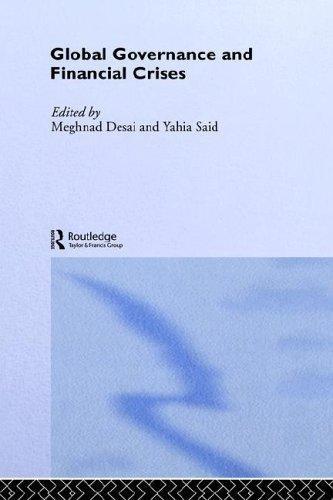
Global Governance and Financial Crises
by
Meghnad Desai
and
Yahia Said
Published 12 Nov 2003
Also, the Southeast Asian three’s heavier dependence on FDI in gross domestic capital formation, especially for manufacturing investments, probably also limited the development of domestic entrepreneurship as well as many other indigenous economic capabilities due to greater reliance on foreign capabilities, associated with FDI (Jomo et al. 1997). After mid-1995, the Southeast Asian currency pegs to the US dollar – which had enhanced the region’s competitiveness as the dollar declined for a decade after the 1985 Plaza accord – became a growing liability as the yen began to depreciate once again. Stronger currencies meant higher production costs, especially with the heavy reliance on imported inputs from East Asia, as well as reduced export price competitiveness, lower export growth and increased current account deficits.

The Only Game in Town: Central Banks, Instability, and Avoiding the Next Collapse
by
Mohamed A. El-Erian
Published 26 Jan 2016
The economic recovery continuously undershot their expectations, compounding concerns not only about effectiveness but also about the eventual exit process itself—including the management of market expectations, the persistence of large central bank balance sheets, and how to coordinate all this with other government agencies (particularly the fiscal agencies).3 These concerns were summarized bluntly in the 2014 Annual Report of the Bank for International Settlements (known as the central bank of central banks) when it referred to prospects for a “bumpy exit” as central banks found it “difficult to ensure a smooth normalization.”4 And it was confirmed a few months later with the messy exit in January 2015 of the Swiss National Bank from a currency peg arrangement designed to reduce the exposure of Switzerland to the Eurozone crisis. Rather than pivot from financial normalization to full recovery, the Eurozone stalled in a multiple 1 percent zone—a low economic growth of 1 percent, “low-flation” of 1 percent, and the more generalized problem within the advanced world of the top 1 percent of the population capturing the vast majority of the income and wealth gains.
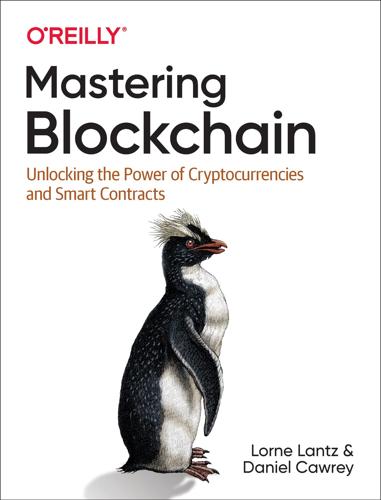
Mastering Blockchain: Unlocking the Power of Cryptocurrencies and Smart Contracts
by
Lorne Lantz
and
Daniel Cawrey
Published 8 Dec 2020
Tether The most well-known project built on Omni is Tether. It encompasses a use case that is incredibly important in the cryptocurrency world: how to represent a stable asset class in an ecosystem of volatile tokens. Tether is a digital blockchain cryptocurrency, and its aim is to provide a stable reserve currency pegged to the US dollar. According to the Tether whitepaper, one Tether token is pegged to one US dollar. Real-world assets do present a problem when represented on a blockchain. That is, how do you actually peg the value of that asset in tokenized form? Tether claims to be backed by the US dollar, but unfortunately other than its website listing balances, there is little evidence that there really is one US dollar in a bank account for every tether in circulation.
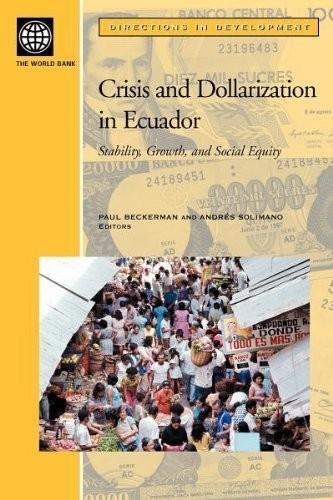
Crisis and Dollarization in Ecuador: Stability, Growth, and Social Equity
by
Paul Ely Beckerman
and
Andrés Solimano
Published 30 Apr 2002
Ecuador: Consumer Prices and Weighted Trading-partner Prices at the Current Exchange Rate, December 1997–December 2001 1990 consumer prices = 100 170.00 1100 160.00 Weighted trading- partner prices 150.00 900 Consumer prices Exchange - rate floated 140.00 130.00 700 120.00 110.00 500 Real- effective exchange rate 100.00 90.00 300 80.00 Dollarization announcement Dec-01 Sep-01 Jun-01 Mar-01 Dec-00 Sep-00 Jun-00 Mar-00 Dec-99 Dep-99 Jun-99 Mar-99 Dec-98 Sep-98 Jun-98 Mar-98 70.00 Dec-97 100 Source: International Monetary Fund. The price-level increase after dollarization in Ecuador was not a unique experience. Many former Soviet republics had similar experiences when they established new currencies upon leaving the ruble area. Estonia, for example, set up a currency board in the early 1990s with its new national currency pegged to the German mark. The authorities found it difficult to determine the “right” exchange rate, especially since the ruble had depreciated sharply in the previous months, and the new currency turned out substantially undervalued at the rate chosen. Although Estonia’s currency board complied closely with textbook rules, the initial undervaluation led to annual price-level increases on the order of 15 percent for several years until parity was reached.

Poorly Made in China: An Insider's Account of the Tactics Behind China's Production Game
by
Paul Midler
Published 18 Mar 2009
Chinese factory owners looked for small excuses as a way of gaining minor advantages. However when there were real, substantive changes in the marketplace, these same factories found the will to keep their prices firm. The United States had been pressuring China to appreciate its currency, and China finally announced in 2004 that it would revise the currency peg, under which the U.S. dollar equaled 8.26 renminbi. In connection with the revision, the U.S. dollar would be devalued by about 3 percent against the renminbi. Every factory that I was working with then pointed to the major news announcement and sent out a notice saying that their prices would be increased by 3 percent.

Birth of the Euro
by
Otmar Issing
Published 20 Oct 2008
Such cases are referred to as ‘euroisation’, whereby the adoption of the currency rests on a unilateral decision by the country concerned. As with the The euro as an international currency • 181 US dollar (‘dollarisation’), such decisions lie outside the control of the central bank issuing the currency. The forms taken by currency pegs range from currency boards through participation in the European exchange rate mechanism (ERM) to arrangements in which the euro has a significant weight in the respective currency basket (as for example in Russia). Table 7 illustrates the regional character of the euro’s role as anchor currency.
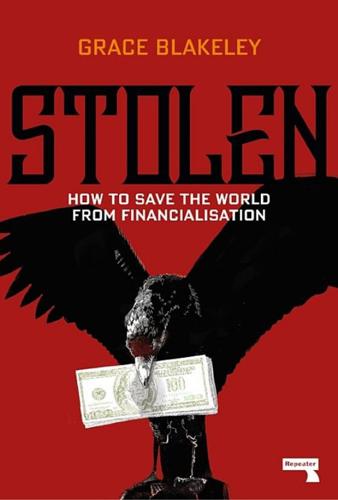
Stolen: How to Save the World From Financialisation
by
Grace Blakeley
Published 9 Sep 2019
Absent any link with gold or any other commodity, money became nothing more than a promise, created by fiat by the state issuing it. The value of a currency would now be determined by the forces of supply and demand. Rather than having to limit the amount of money they were creating in order to maintain a currency peg, states would be able to create as much money as they liked, accounting only for the threat of inflation. Private banks were also now free to create currency on their behalf in the form of credit, constrained only by domestic regulation. The collapse of Bretton Woods represented the final step away from a system of commodity money, which has been the norm for most of human history, and towards fiat and credit money, which now dominate all other forms of money.
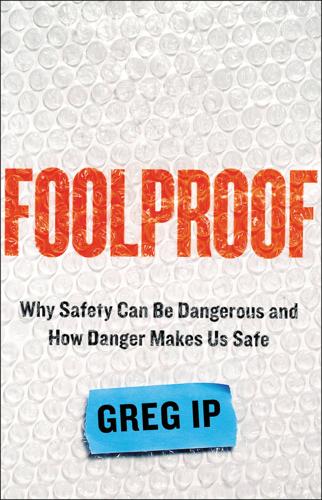
Foolproof: Why Safety Can Be Dangerous and How Danger Makes Us Safe
by
Greg Ip
Published 12 Oct 2015
The quiet period was quiet in part because financial freedom was tightly circumscribed. For years after the Second World War, many countries limited how much money residents could take in or out of the country or invest in another country’s stocks and bonds. The purpose of these capital controls was to tamp down the big flows of money that made it harder to keep currencies pegged to one another, as the postwar monetary system required. They were also intended to force savers to fund investments at home by making it harder to seek better returns abroad. The strategy worked, but it was burdensome: for a while Britons couldn’t take more than £100 when they traveled abroad, and Americans paid a tax when they bought foreign stocks and Treasury bills.
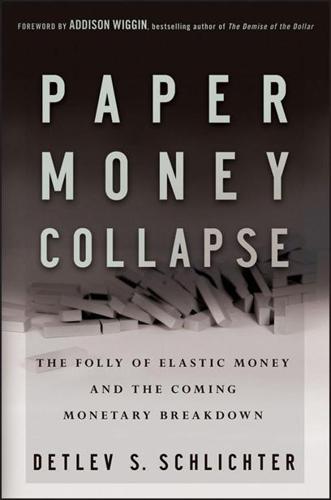
Paper Money Collapse: The Folly of Elastic Money and the Coming Monetary Breakdown
by
Detlev S. Schlichter
Published 21 Sep 2011
The growing supply of dollar-denominated IOUs that is the necessary result of ongoing U.S. money production has been absorbed, not by voluntary acts of saving on the part of independent foreign individuals, but by political authorities that have accumulated them as monetary reserves, and, via a de facto currency peg, monetized them by printing matching amounts of their own paper money. Thus, a drop in international purchasing power of the initially inflating currency has been arrested. Monetary expansion in the United States could proceed further without a loss of purchasing power for the dollar on international markets.
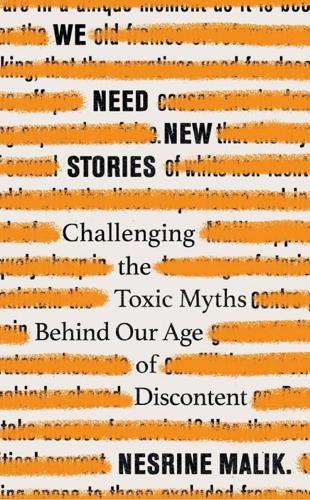
We Need New Stories: Challenging the Toxic Myths Behind Our Age of Discontent
by
Nesrine Malik
Published 4 Sep 2019
And these are the people who are now responsible for framing the dangers of Trumpism.’ If it were a real market, their stalls would have been shut down long ago. The analogy is further stretched by the fact that real marketplaces actually require a lot of regulation. There are anti-monopoly rules, there are interest rate fixes and, in many markets, artificial currency pegs. In the press, publishing and the business of ideas dispersal in general, there are players that are deeply entrenched and networked, and so the supply of ideas reflects their power. In a world where funding and lobbying groups can sponsor public opinion makers from university all the way through to publication of their first book, where lazy or time-stressed TV producers keep returning to the same voices for their commentary, and where publishers and top media executives tend to come broadly from the same pool, social class and universities, it is inevitable that there is a failure of curation.
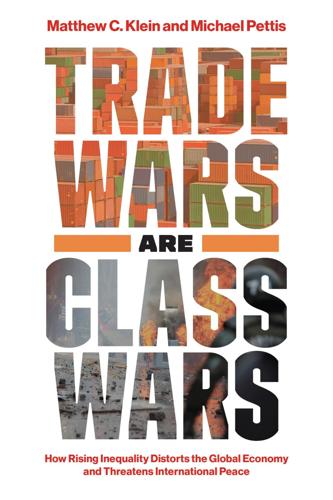
Trade Wars Are Class Wars: How Rising Inequality Distorts the Global Economy and Threatens International Peace
by
Matthew C. Klein
Published 18 May 2020
The Chinese government could have offset some of those foreign inflows by loosening its outbound capital controls and allowing Chinese savers to buy foreign assets. Liberalization, however, would have threatened the government’s control of the economy and financial system. Beijing therefore chose to buy trillions of dollars of foreign exchange reserves to sustain its currency peg. Between 1996 and the eve of the global financial crisis, SAFE spent $1.8 trillion accumulating foreign reserves, roughly two-thirds of which were invested in the United States. After the global financial crisis, the Chinese government spent another $2 trillion accumulating even more foreign assets to prevent its currency from appreciating further.30 Outside of East Asia, the major buyers of reserve assets have been commodity exporters, mainly the oil and gas producers of the Arabian Peninsula, Norway, and Russia.

Fooled by Randomness: The Hidden Role of Chance in Life and in the Markets
by
Nassim Nicholas Taleb
Published 1 Jan 2001
Actually, wouldn’t it be better if the length of movies were kept a secret? The Scrambling of Messages Besides its effect on well-being, uncertainty presents tangible informational benefits, particularly with the scrambling of potentially damaging, and self-fulfilling, messages. Consider a currency pegged by a central bank to a fixed rate. The bank’s official policy is to use its reserves to support it by buying and selling its currency in the open market, a procedure called intervention. But should the currency rate drop a tiny bit, people will immediately get the message that the intervention failed to support the currency and that the devaluation is coming.
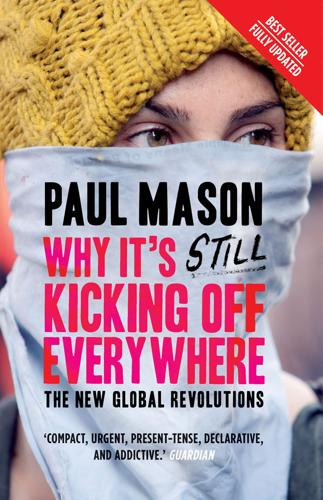
Why It's Still Kicking Off Everywhere: The New Global Revolutions
by
Paul Mason
Published 30 Sep 2013
But in March 1930, as the Wall Street Crash cratered the German economy, a cross-party coalition government of the centre-left and -right collapsed. It was replaced by the first of three ‘appointed’ governments, led by Hein-rich Brüning and designed to prevent either the communists or the now-growing Nazis gaining power. Faced with a recession, Brüning followed a policy of austerity while keeping Germany’s currency pegged to the Gold Standard (much as Greece as follows a policy of austerity dictated by euro membership). This made the recession worse. As unemployment rocketed, so did the Nazi vote: in a shock breakthrough they came second in the elections of September 1930, with 18 per cent. But Brüning was determined to maintain order: he cracked down on both the right and left, banning the Nazi paramilitary organization, the sturmabteilung, along with the rival communist uniformed groups.

Red Flags: Why Xi's China Is in Jeopardy
by
George Magnus
Published 10 Sep 2018
In his view, the reason was that ‘the monetary system of a people reflects all that the people wants, does, endures, is, and that simultaneously the monetary system of a people exercises a significant influence upon its economic activity and its destiny in general’.1 For many years, China has been driven to maintain the stability of its currency, partly for economic purposes, but also to anchor expectations at home about the management of money and finance, and to build trust abroad in the Renminbi itself, and in the Chinese foreign exchange rate regime. It is, in effect, a form of soft power. During the Asian crisis in 1997–98, the IMF and other bodies urged China to devalue, but China resisted the path followed by several Asian governments, whose currency pegs had proven unsustainable. It is true that China was different from its Asian neighbours. The Renminbi was not freely convertible, and China neither experienced significant capital flows from overseas, nor allowed capital to leave China freely. Never-theless, China’s concern was to build trust in its reputation as a stabilising force, to be a leader in east and Southeast Asia, and ultimately to develop a Renminbi bloc with other Asian countries, albeit to the chagrin of Japan, South Korea and Taiwan.

MegaThreats: Ten Dangerous Trends That Imperil Our Future, and How to Survive Them
by
Nouriel Roubini
Published 17 Oct 2022
But there’s a treacherous catch to this tool, as well. Exchange rates tied to a foreign currency like the US dollar widen an emerging market trade deficit when the currency is pegged at an overvalued level and/or exports fetch lower prices, as when the price of commodities exported by that small economy falls. Then, if that currency peg to the US dollar collapses because of an untenable trade deficit, the dollar debt of a small emerging market rises in real terms. Indeed, if Argentina borrows from abroad in US dollars and its currency then depreciates, the real value of such a foreign currency debt expressed in local currency—the peso—sharply increases; this is what is referred to as the balance sheet effect of currency mismatches.
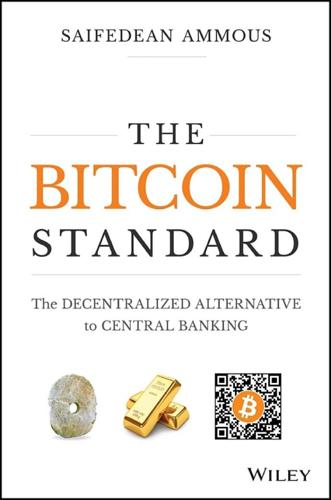
The Bitcoin Standard: The Decentralized Alternative to Central Banking
by
Saifedean Ammous
Published 23 Mar 2018
From then on, economic depressions became a regular and painful part of the economy, recurring every few years and providing justification for growing government intervention to handle their fallout. A good example of the benefits of sound money can be found looking at the fate of the Swiss economy, the last bastion of sound money, which had kept its currency pegged to gold until its ill‐fated decision to abandon global neutrality and join the International Monetary Fund in 1992. Before that date, the unemployment rate had always been practically zero, virtually never exceeding 1%. After they joined the IMF, whose rules prevent governments from tying their currency's value to gold, the Swiss economy began to experience the pleasures of Keynesian funny money, with unemployment rate rising to 5% within a few years, rarely ever dropping below 2%.
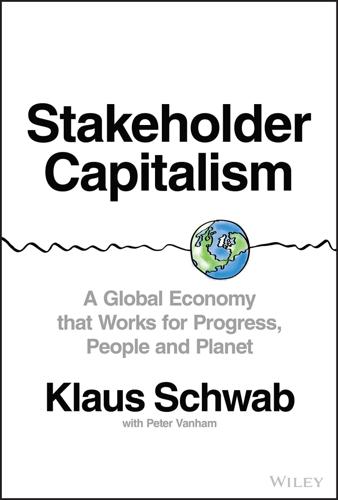
Stakeholder Capitalism: A Global Economy That Works for Progress, People and Planet
by
Klaus Schwab
and
Peter Vanham
Published 27 Jan 2021
And even then, it endured another four decades of authoritarian and isolationist rule before entering its liberal and democratic era. Finally, Indonesia's first attempt to benefit from global markets backfired in 1997, when the Asian financial crisis pushed its economy in a severe recession: starting in Thailand, speculators massively bet against the ability of Southeast Asian nations to maintain their currency pegs, leading to severe devaluation, a soaring public debt, and an economic recession from Indonesia to Malaysia to the Philippines. It was financial globalization gone bad. Still, the story of Indonesia in recent years can be called a success story of globalization. According to the World Bank, Indonesia's prudent economic management helped push poverty to a record low of under one in ten by the end of 2018, and trade was one of the sectors contributing most to Indonesia's growth.5 Many people in the streets of Jakarta and Bandung won't necessarily name their country's openness to trade as the reason for their optimism—they simply are happy life is going better for them.

Stakeholder Capitalism: A Global Economy That Works for Progress, People and Planet
by
Klaus Schwab
Published 7 Jan 2021
And even then, it endured another four decades of authoritarian and isolationist rule before entering its liberal and democratic era. Finally, Indonesia's first attempt to benefit from global markets backfired in 1997, when the Asian financial crisis pushed its economy in a severe recession: starting in Thailand, speculators massively bet against the ability of Southeast Asian nations to maintain their currency pegs, leading to severe devaluation, a soaring public debt, and an economic recession from Indonesia to Malaysia to the Philippines. It was financial globalization gone bad. Still, the story of Indonesia in recent years can be called a success story of globalization. According to the World Bank, Indonesia's prudent economic management helped push poverty to a record low of under one in ten by the end of 2018, and trade was one of the sectors contributing most to Indonesia's growth.5 Many people in the streets of Jakarta and Bandung won't necessarily name their country's openness to trade as the reason for their optimism—they simply are happy life is going better for them.

The Deficit Myth: Modern Monetary Theory and the Birth of the People's Economy
by
Stephanie Kelton
Published 8 Jun 2020
This policy mix amounts to recommending that the developing country forsake any effort to enhance its monetary sovereignty. Whatever the intention, the actual results from this package are perverse: when countries sacrifice monetary sovereignty but cannot acquire sufficient foreign currency to defend the target exchange rate, their currency pegs collapse, potentially causing a downward spiral, as governments, businesses, and even households cannot favorably convert domestic currency to repay debts denominated in foreign currency.29 Hyperinflation can set in, as the exchange rate plummets, and the cost of crucial imports skyrocket in price.

The Bond King: How One Man Made a Market, Built an Empire, and Lost It All
by
Mary Childs
Published 15 Mar 2022
Then another one. And another. Four auctions total, unfilled. The government of Mexico was failing to fund itself. Yields on its existing debt kept climbing. Bad and getting worse, fast. “As they got higher, people got concerned that if they got too high, Mexico would say no más, we’re going to abandon our currency peg and maybe default on our debt,” recalls former Pimco partner Brynjo. All the while, Pimco sat there with a moderate amount of Mexico’s bonds. Not too big, but not insignificant. A modest but vested interest in the country not falling to pieces. With yields climbing, bond prices had dropped, so Pimco was looking at a “paper” loss on its books—a loss it would have to recognize if it sold the debt.
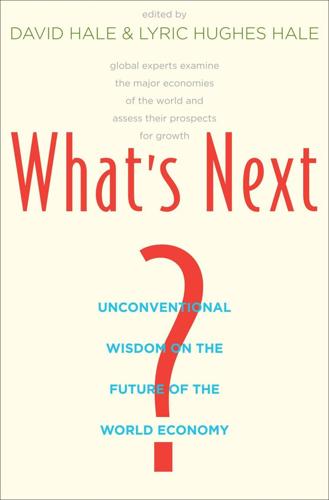
What's Next?: Unconventional Wisdom on the Future of the World Economy
by
David Hale
and
Lyric Hughes Hale
Published 23 May 2011
COST OF CAPITAL: The required return that is necessary to make a capital budgeting project worth pursuing. CREDIT CRUNCH: A period of time when credit is costly and/or difficult to obtain. CROWDING-OUT EFFECT: The reduction in private consumption or investment that occurs because of an increase in government expenditures. CURRENCY PEG: A publicly announced fixed exchange rate that is often made against a major currency or basket of currencies and maintained by monetary authorities. CURRENCY SPECULATION: The process of buying, selling, and/or holding currencies in order to make a profit from favorable exchange rate fluctuations.
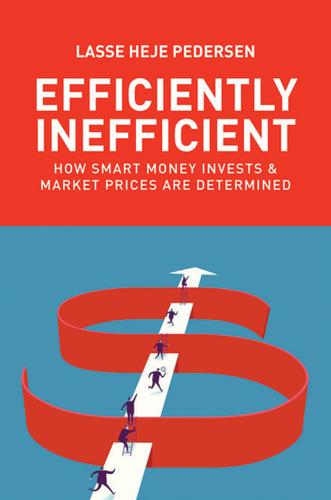
Efficiently Inefficient: How Smart Money Invests and Market Prices Are Determined
by
Lasse Heje Pedersen
Published 12 Apr 2015
If they believe that a currency band is stable, they may bet on mean-reversion, buying the currency as it nears its lower bound and selling it close to its upper bound. Figure 11.1. The distribution of quarterly excess returns from the currency carry trade. Source: Brunnermeier, Nagel, and Pedersen (2008). More dramatically, macro traders may bet that a currency peg will break, as George Soros famously did when he “broke the Bank of England” in 1992. This is a story often told, but let me mention here that such a trade has a negative carry. Said differently, the carry trade will be positioned in the opposite direction. To defend a currency under attack, the central bank must raise the local interest rate (as the Bank of England did in 1992).

The Future Is Asian
by
Parag Khanna
Published 5 Feb 2019
The Asianization of the World The legacy of the nineteenth-century Europeanization and twentieth-century Americanization of the world is that most nations have been shaped by the West in some significant way: European colonial borders and administration, US invasions or military assistance, a currency pegged to the US dollar, American software and social media, and so forth. Billions of people have acquired personal and psychological connections to the West. They have English or French as a first or second language, have relatives in America, Canada, or Great Britain, cheer for an English Premier League football team, never miss films starring their favorite Hollywood actor or actress, and follow the ins and outs of US presidential politics.
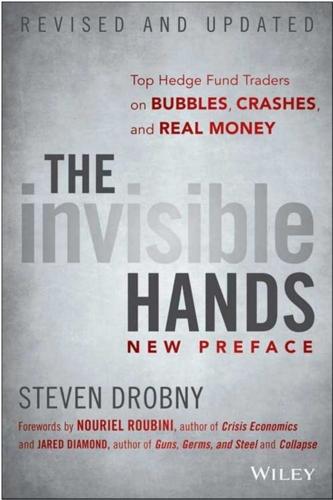
The Invisible Hands: Top Hedge Fund Traders on Bubbles, Crashes, and Real Money
by
Steven Drobny
Published 18 Mar 2010
What was your first setback as a trader? The market always teaches you a lesson, and the first setback that I recall was due to concerns about a Chinese devaluation in 1997. After much research, one of my trades was fading risk premium in Chinese currency forwards on the thesis that China would not adjust its fixed currency peg. I was fading probably 1 to 2 percent annualized risk premium in the renminbi forward market when the Thai baht devalued. Frankly, it was a very sound thesis. But suddenly there was speculation of a Chinese devaluation, which I found confounding and astonishing because a large, sudden move occurred in the forward points of something that had been pegged for a long time.
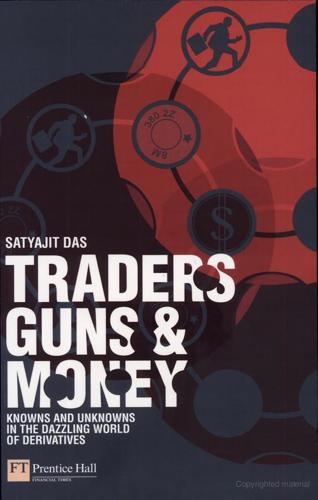
Traders, Guns & Money: Knowns and Unknowns in the Dazzling World of Derivatives
by
Satyajit Das
Published 15 Nov 2006
‘We use sophisticated cross hedge and proxy models? Didn’t you have correlation hedges in your day, old timer?’ The traders were using baskets of dollars, yen and European currencies to hedge Asian markets. The Asian rates were ‘pegged’ and ‘managed’ by the central banks. The end came swiftly. In 1997, the currency pegs collapsed; the market found a new ‘level’; the traders were carried out in body bags. Modellers mused about ‘paradigm shifts’ and ‘discontinuous markets’. Some banks had been smart, they had just matched trades between two suicidal players. This didn’t help: the people who entered into the transactions were affected by amnesia.

Shutdown: How COVID Shook the World's Economy
by
Adam Tooze
Published 15 Nov 2021
They inflicted heavy losses on importers, who had to pay more for their goods, and on those who were unfortunate or unwise enough to have borrowed in dollars. A sudden devaluation, if it gathered momentum, might overshoot. Then the national authorities would have no alternative but to hike interest rates, amplifying the pain. To moderate these risks, what was warranted was not a rigid defense of a particular currency peg, but intervention to moderate the pace of exchange rate movements. For this the authorities needed ample foreign exchange reserves. From the beginning of the millennium, China’s reserves rose to a peak in 2014 of $4 trillion. No one could match that, but Thailand, Indonesia, Russia, and Brazil all accumulated large foreign exchange reserves too.

Inflated: How Money and Debt Built the American Dream
by
R. Christopher Whalen
Published 7 Dec 2010
Since the fiat paper dollar was the center of the post-WWII financial world, America’s ultimate victory in the Cold War was assured. But as with the Civil War, the cost of victory has been extremely high. The Dollar’s Golden Age The 1950s and 1960s are considered the golden age of modern American culture, albeit one that existed in a highly controlled economy. Today the idea of using price controls or a currency peg to manage an economy may be considered laughable, effectively creating a target of opportunity for George Soros and other global speculators—the modern day heirs of Jay Gould—to attack. But in the restricted financial markets of the 1950s and 1960s, when much of the global economy was still recovering from decades of depression and war, the system of pegging other currencies to the dollar appeared to work, at least initially.

All the Money in the World
by
Peter W. Bernstein
Published 17 Dec 2008
Instead, he relied on his own investment savvy, garnered from newspapers and an army of paid informants around the globe who worked in central banks and on trading desks. Charges of insider trading61 have dogged him.†14 In 1992 he became infamous when he shorted the British pound, betting that its value would drop. The pound was part of the European currency peg, which obliged Common Market countries to value their currencies within close reach of one another. The British government tried to prop up the pound to keep it near the stronger German mark, buying it heavily and raising interest rates despite high unemployment—to no avail. Britain was forced to withdraw from the European Exchange Rate Mechanism (ERM), the pound plunged, and Soros’s $20 billion hedge—the idea of his chief investment officer, Stanley Druckenmiller—made him $1 to $2 billion.
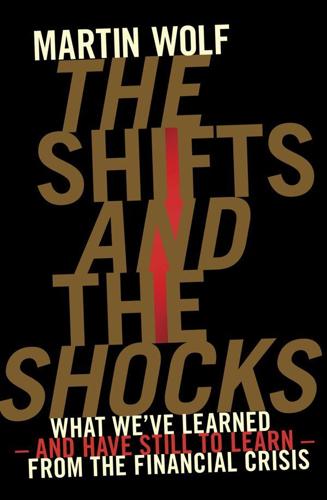
The Shifts and the Shocks: What We've Learned--And Have Still to Learn--From the Financial Crisis
by
Martin Wolf
Published 24 Nov 2015
As usual, the booms flattered fiscal positions: Estonia’s net public debt was minus 4 per cent of GDP in 2007, Latvia’s 5 per cent and Lithuania’s 11 per cent. Then came the four horsemen of financial crises: ‘sudden stops’ in capital inflows, asset-price collapses, recessions and fiscal deficits. In response, the Baltics decided to stick to currency pegs and embrace austerity. A substantial rescue package was also negotiated for Latvia in late 2008, with support from the European Union, the International Monetary Fund, the Nordic countries and others. Yet some doubted whether the programme would work. Olivier Blanchard, the IMF’s economic counsellor, stated in June 2013 that ‘Many, including me, believed that keeping the peg was likely to be a recipe for disaster, for a long and painful adjustment at best, or more likely, the eventual abandonment of the peg when failure became obvious.’12 He was wrong.
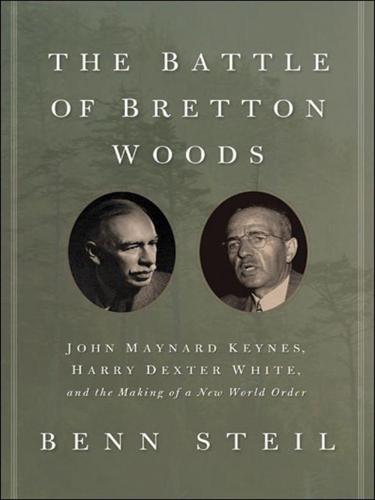
The Battle of Bretton Woods: John Maynard Keynes, Harry Dexter White, and the Making of a New World Order
by
Benn Steil
Published 14 May 2013
Senators Charles Schumer and Lindsey Graham attacked the Chinese practice, declaring that “one of the fundamental tenets of free trade is that currencies should float.” This contradicted not only the intellectual history of economics, but the tenet that guided the United States at Bretton Woods.34 There is a common thread running through White’s blueprint for Bretton Woods in 1944, Nixon’s closing of the gold window in 1971, Rubin’s hailing of the Chinese currency peg in 1998, and Geithner’s condemnation of it in 2009: whether the United States supports fixed or floating exchange rates at any given point in time is determined by which will give it a more competitive dollar. Whereas such elasticity of principle can be rationalized from a narrow perspective of U.S. national interest, it is more difficult to reconcile with enduring foreign confidence in a dollar-based global monetary system.
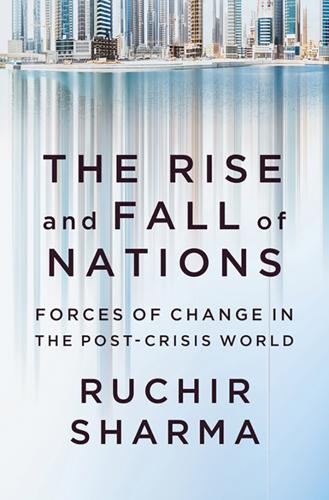
The Rise and Fall of Nations: Forces of Change in the Post-Crisis World
by
Ruchir Sharma
Published 5 Jun 2016
Capital flight begins with locals, I suspect, because they have better access to intelligence about local conditions. They can pick up informal signs—struggling businesses, looming bankruptcies—long before these trends show up in the official numbers that most big foreign institutions rely on. Balance of payments data show that during Mexico’s “tequila crisis” in December 1994, when the currency peg against the dollar came unstuck, locals started to switch out of pesos and into dollars more than eighteen months before the sudden devaluation. Years later Russians began to pull money out of their country more than two years before the ruble collapsed in August 1998. Savvy locals are also often the first to return.

Why Stock Markets Crash: Critical Events in Complex Financial Systems
by
Didier Sornette
Published 18 Nov 2002
These maxima are followed by sharp corrections triggered by and following the abandonment by Thailand of the fixed-exchange rate system after strong attacks on its currency. When the Thailand domino fell, three other Asian countries immediately got caught up in the turmoil: the Philippines, Indonesia, and Malaysia. None had situations as bad as Thailand, but they all had currencies pegged to a strong dollar, so they were hit hard. Such financial contagion is based on the same mechanisms as that leading to speculative bubbles. Investors’ and lenders’ moods follow regime shifts: when times are good, they think less about risk and focus on potential gain. When something bad happens, they start worrying about risk again, and the whole structure of hope and greed that had driven the market up collapses.

Manias, Panics and Crashes: A History of Financial Crises, Sixth Edition
by
Kindleberger, Charles P.
and
Robert Z., Aliber
Published 9 Aug 2011
The Bank of France did not show the restraint towards the United States that they had shown to the British, and together with other members of the gold bloc converted $750 million of US dollar deposits into gold. The deflationary pressure exerted by this reduction in US gold holdings, and by the depreciation of the British pound and of the currencies pegged to the pound, weakened the US banking system. The New York Fed did not ask for help or even for forbearance in the conversion of US dollar deposits into gold. The code of the central banker calls for a stiff upper lip, reminiscent of Walter Mitty refusing the blindfold before the firing squad.
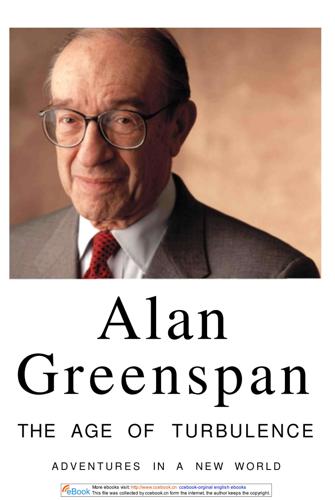
The Age of Turbulence: Adventures in a New World (Hardback) - Common
by
Alan Greenspan
Published 14 Jun 2007
I recall looking across the table at Cavallo at another G20 meeting and wondering whether he was aware that the lending backstop to the peso would remain a source of support only if it was not used in excess. 342 More ebooks visit: http://www.ccebook.cn ccebook-orginal english ebooks This file was collected by ccebook.cn form the internet, the author keeps the copyright. LATIN AMERICA AND POPULISM Maintaining that large dollar buffer would likely have enabled the currency peg to hold indefinitely However, the political system of Argentina could not resist using the abundance of seemingly costless dollars in attempts to accommodate constituents' demands. Gradually but inexorably the buffer of dollar-borrowing capacity was drawn down. Dollars often were borrowed to sell for pesos in a futile effort to support the peso-dollar parity.
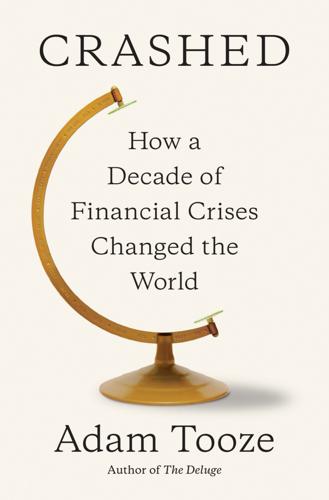
Crashed: How a Decade of Financial Crises Changed the World
by
Adam Tooze
Published 31 Jul 2018
The appearance of stability offered by a fixed exchange rate encouraged a large inflow of foreign funds, which helped to stoke up domestic economic activity, creating an unbalanced trade account funded from abroad. Banks that acted as the conduit for foreign funds boomed. This set up the crisis.22 When international investors lost confidence, the result was a devastating sudden stop. Then the central bank’s foreign exchange reserves would drain and it would have no option but to let the currency peg go. Stability would give way to a disastrous devaluation. Those who got their money out first would be saved. Those who had borrowed in foreign currency would face bankruptcy. This was the saga of the 1990s: 1994 in Mexico; 1997 in Malaysia, South Korea, Indonesia and Thailand; 1998 in Russia; 1999 in Brazil.

Crucible: The Long End of the Great War and the Birth of a New World, 1917-1924
by
Charles Emmerson
Published 14 Oct 2019
The boss of the Reichsbank boasts that, armed with enough zeroes, paper and ink, the bank will soon be able to issue, almost every day, banknotes of a value equal to the entire current stock in circulation. But despite–or because of–this ever-increasing flood of money, no one ever seems to have enough. Each banknote printed reduces the value of the rest. Local communities try to escape the madness by creating their own currencies pegged to something–anything–which can still be trusted as a store of value. Some become fantastically rich in these months; most become poor. They look for scapegoats. PAMPLONA, SPAIN–PARIS: While André Breton is fishing in Brittany, and Albert and his son are sailing in the Baltic, Hadley Hemingway is five months pregnant and Ernest has a new hobby.
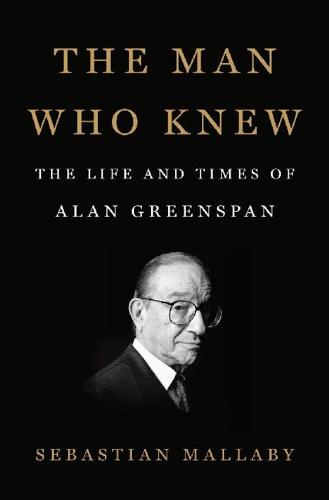
The Man Who Knew: The Life and Times of Alan Greenspan
by
Sebastian Mallaby
Published 10 Oct 2016
As the Thai baht followed the greenback up, Thailand lost competitiveness and its trade deficit swelled alarmingly. To pay for the excess of imports over exports, Thailand resorted to borrowing from foreigners. But this strategy could be sustained for only so long, and pretty soon speculators woke up to the fact that it was a matter of time before the currency peg shattered. The speculators sold baht aggressively, and their prophecy fulfilled itself. On July 1, 1997, the peg duly broke and the currency began a headlong fall, causing the economy to shrink by one sixth and transferring more than $1 billion of Thai savings from the central bank to the speculators.10 Once Thailand fell, the panic spread to its neighbors.
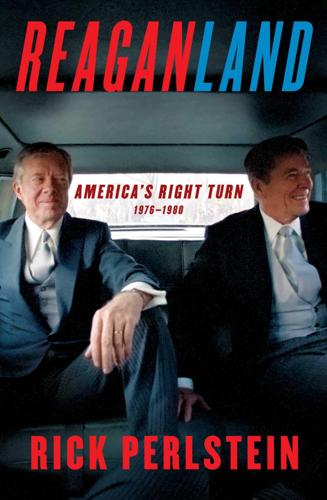
Reaganland: America's Right Turn 1976-1980
by
Rick Perlstein
Published 17 Aug 2020
Wanniski left those niceties to the hacks he dismissed as “academic theoreticians”—just about every school of which he managed to insult for missing “what some would call a ‘Copernican revolution’ in economic policy.” What was it these “economic doctors of Cambridge and Chicago” failed to understand? That stagflation could be easily fixed. Just combine tight money (ideally, via a “common simulated currency” pegged to the value of gold) and “fiscal ease”; in other words, radical tax cuts. Though Wanniski only called them “implied” tax cuts: for once the economy was “optimized by putting the unemployed resources to work,” they weren’t like tax cuts at all, because everyone would become richer. And unlike every other existing theory on fixing inflation, Mundell and Laffer’s “would not involve a period of suffering by the world’s population in order to achieve improvement.”